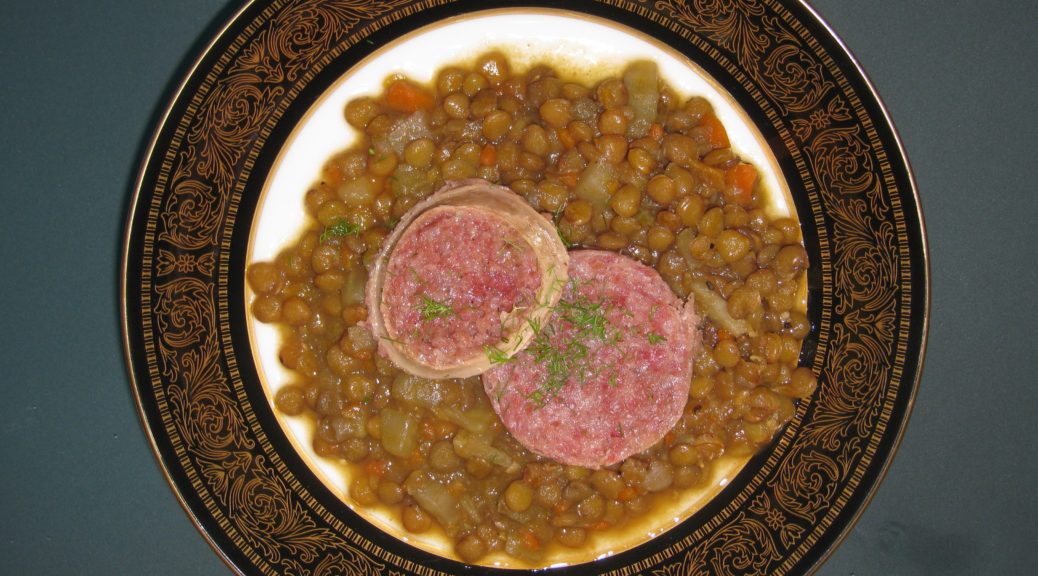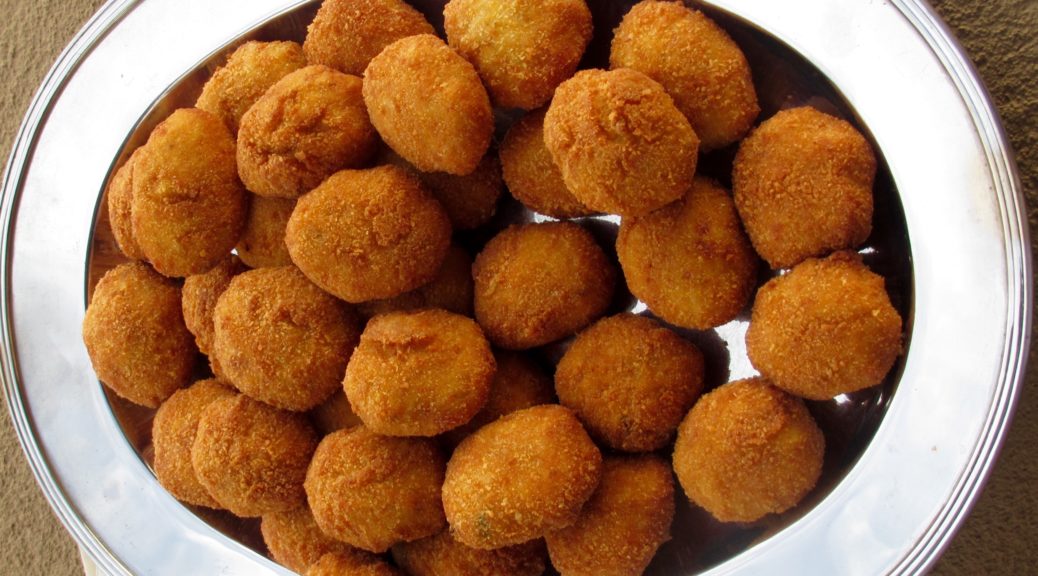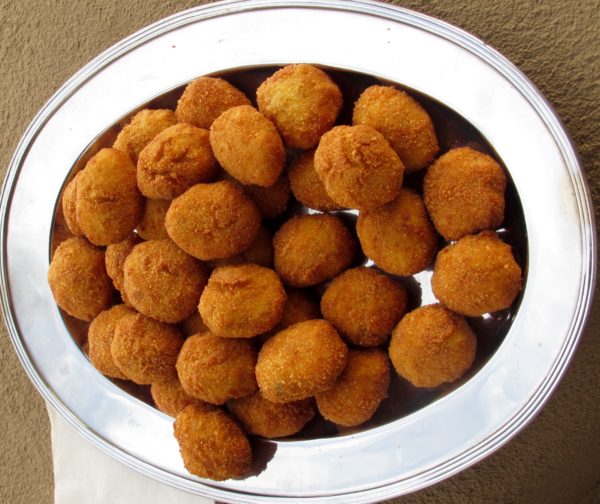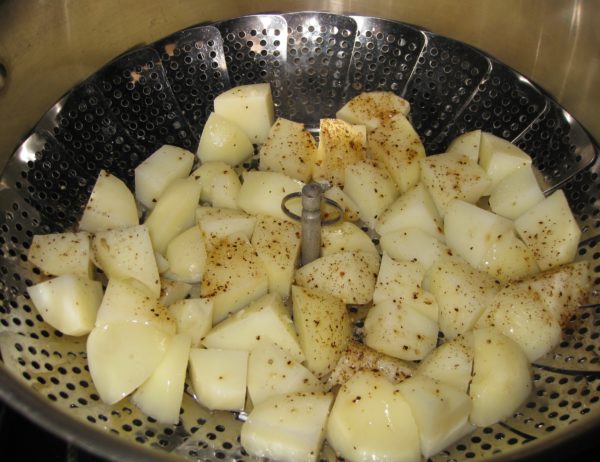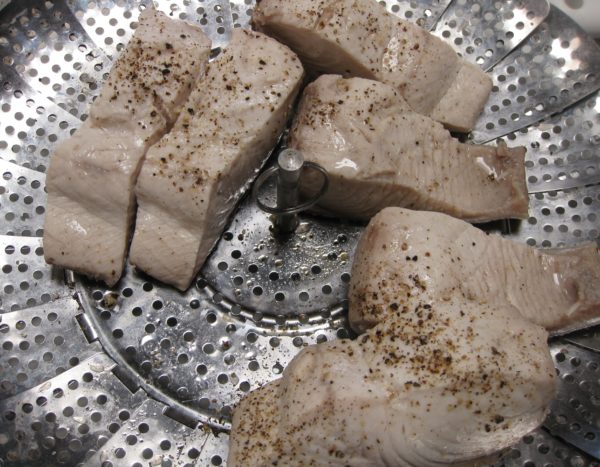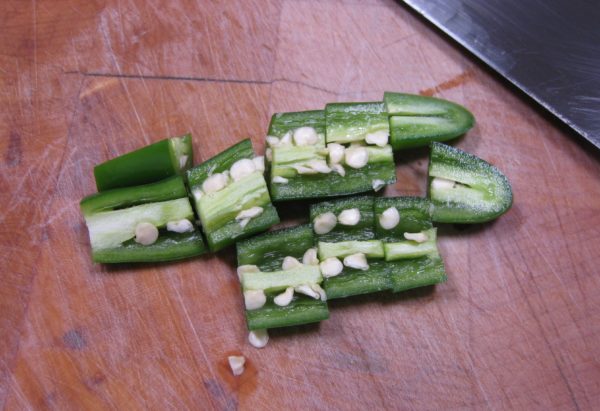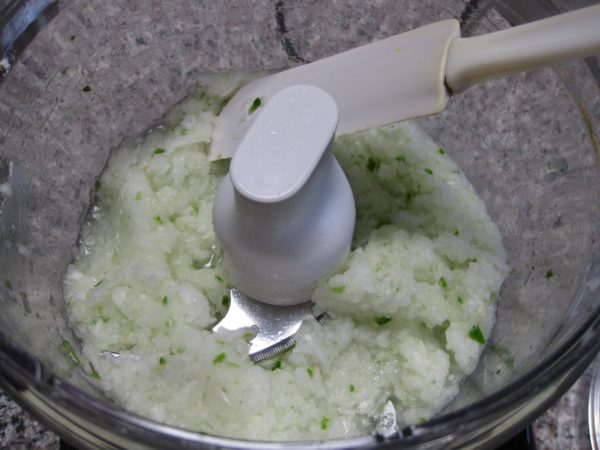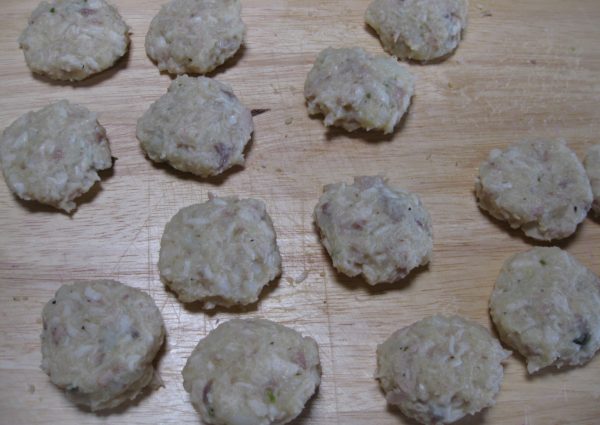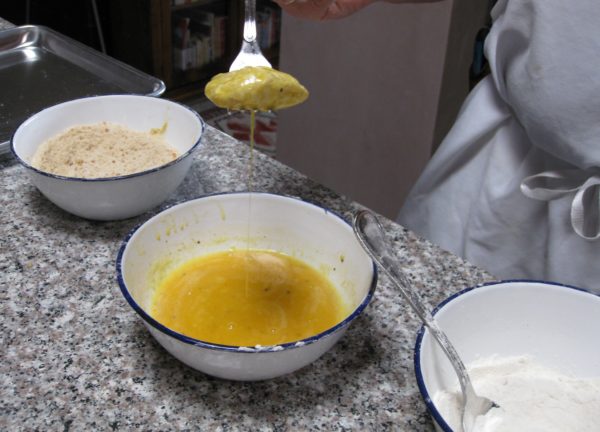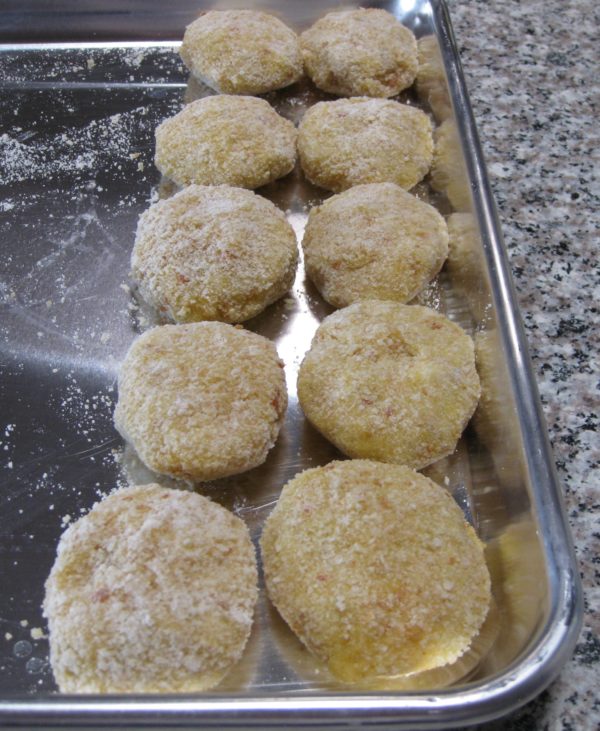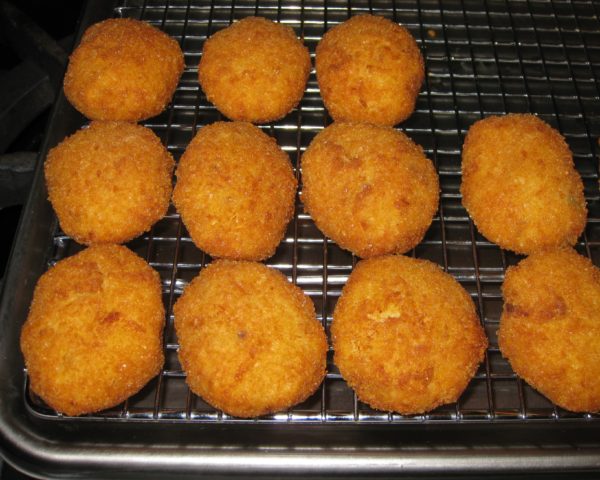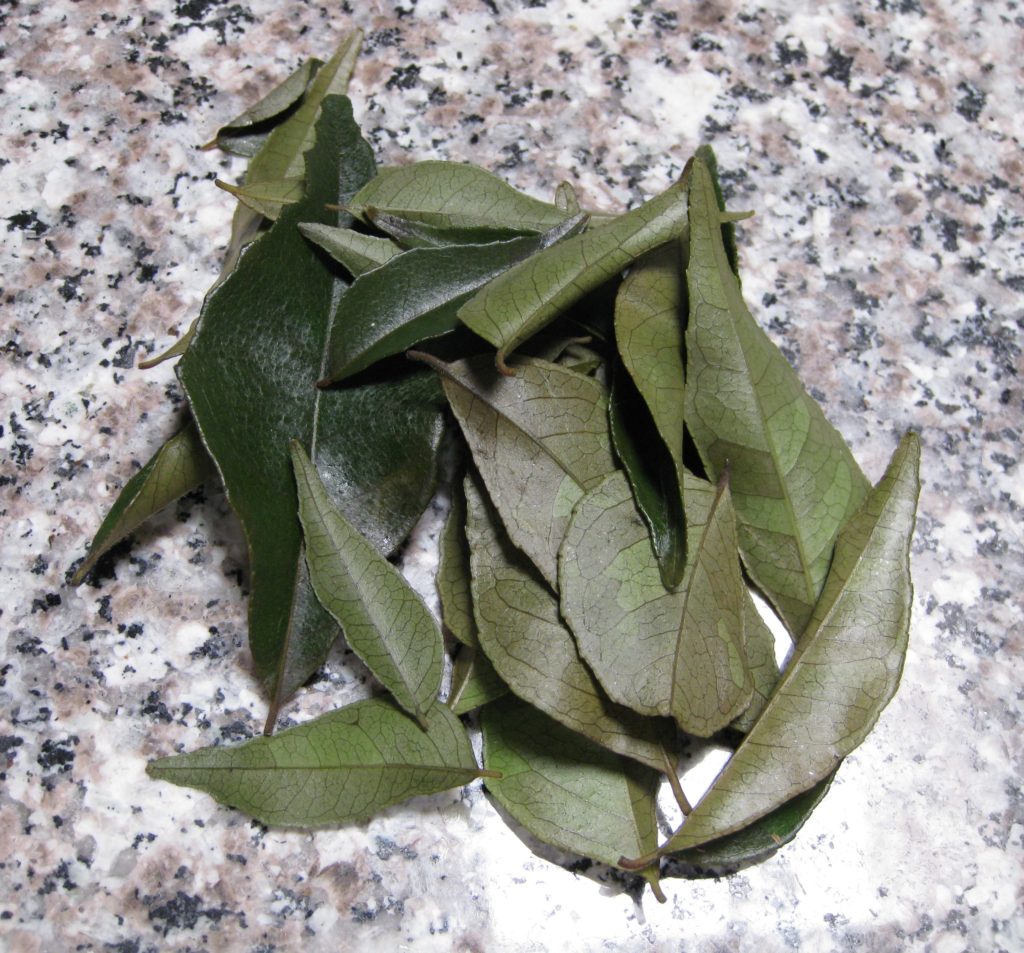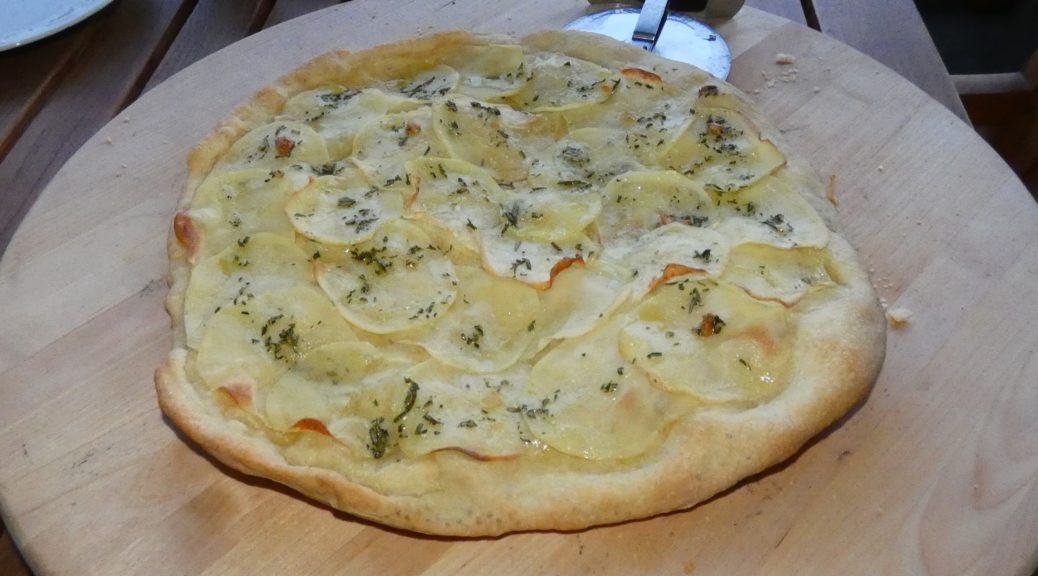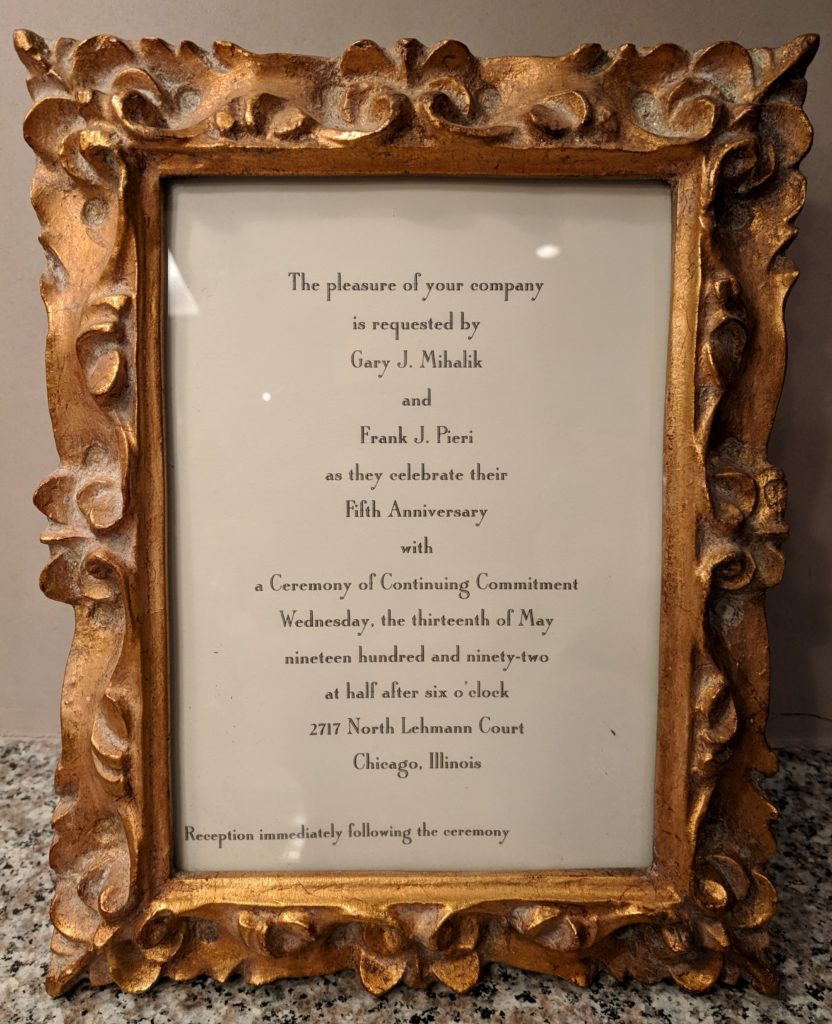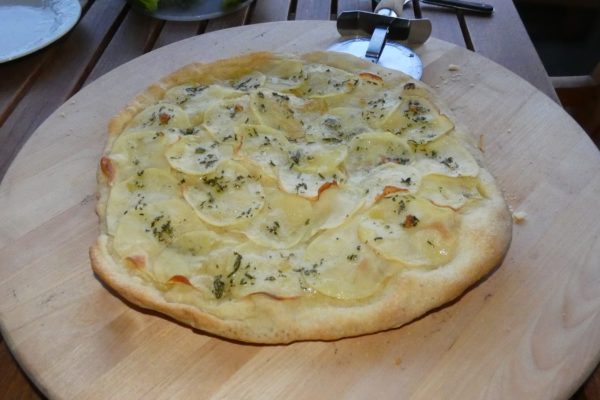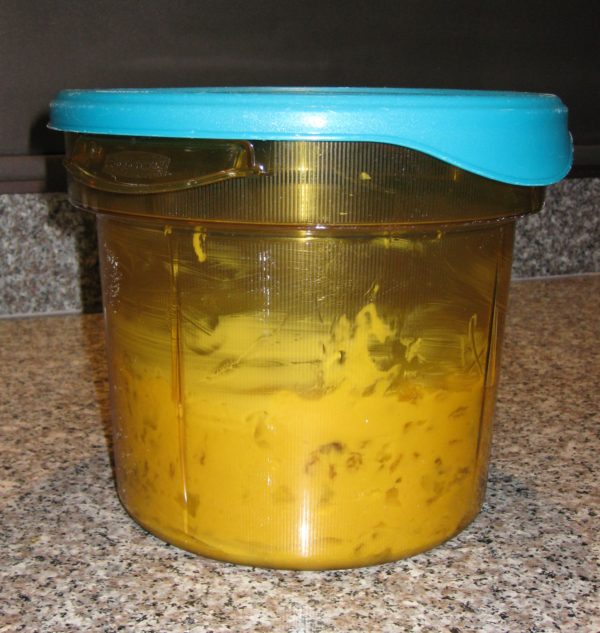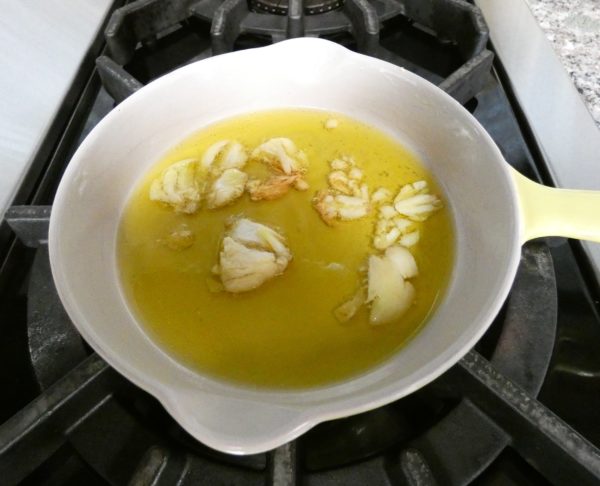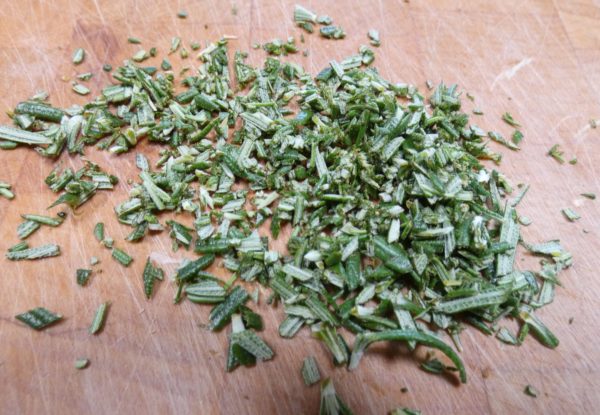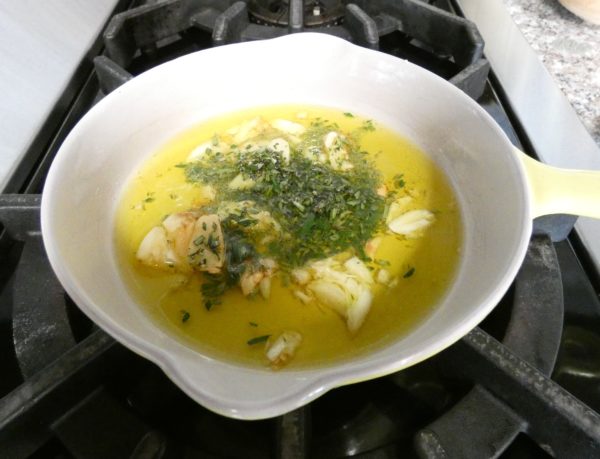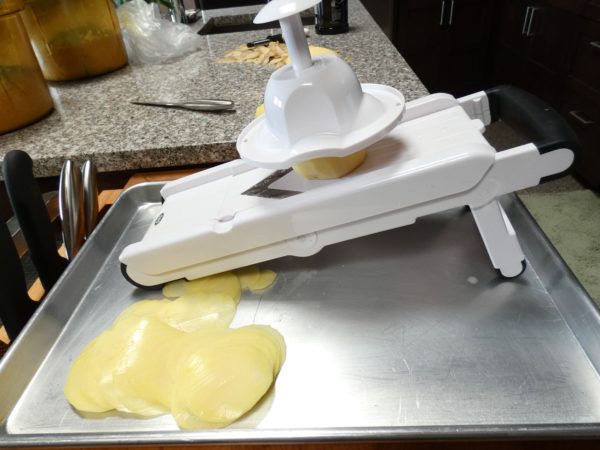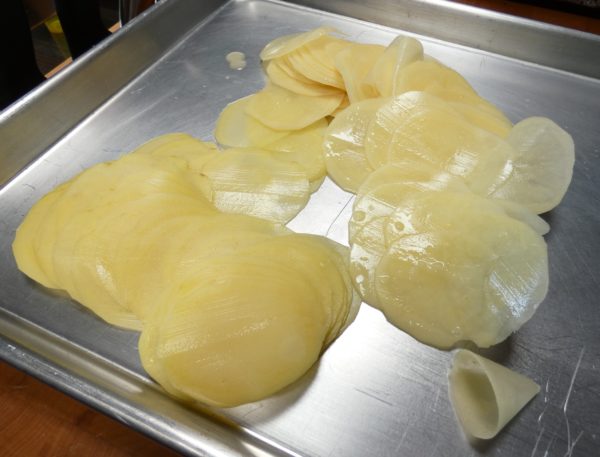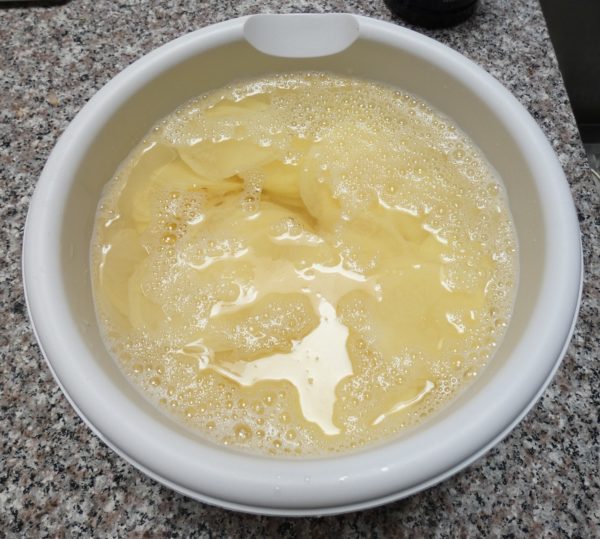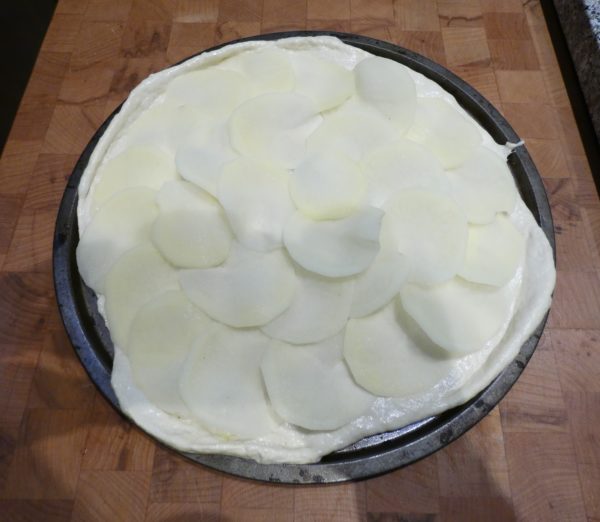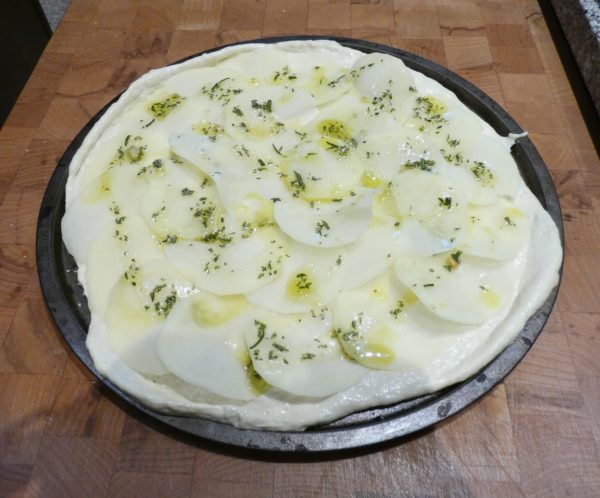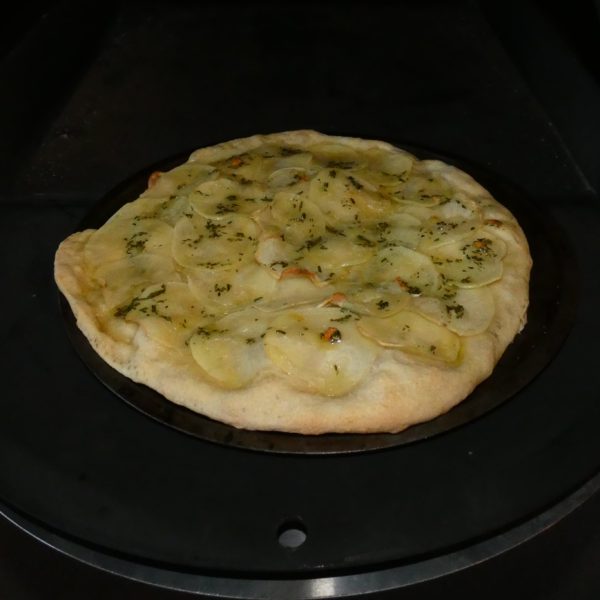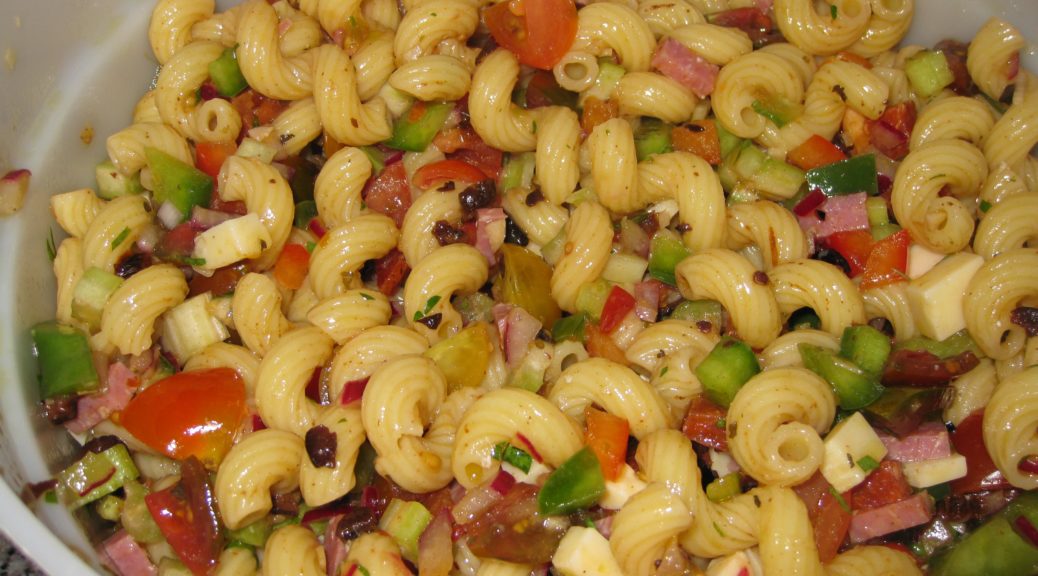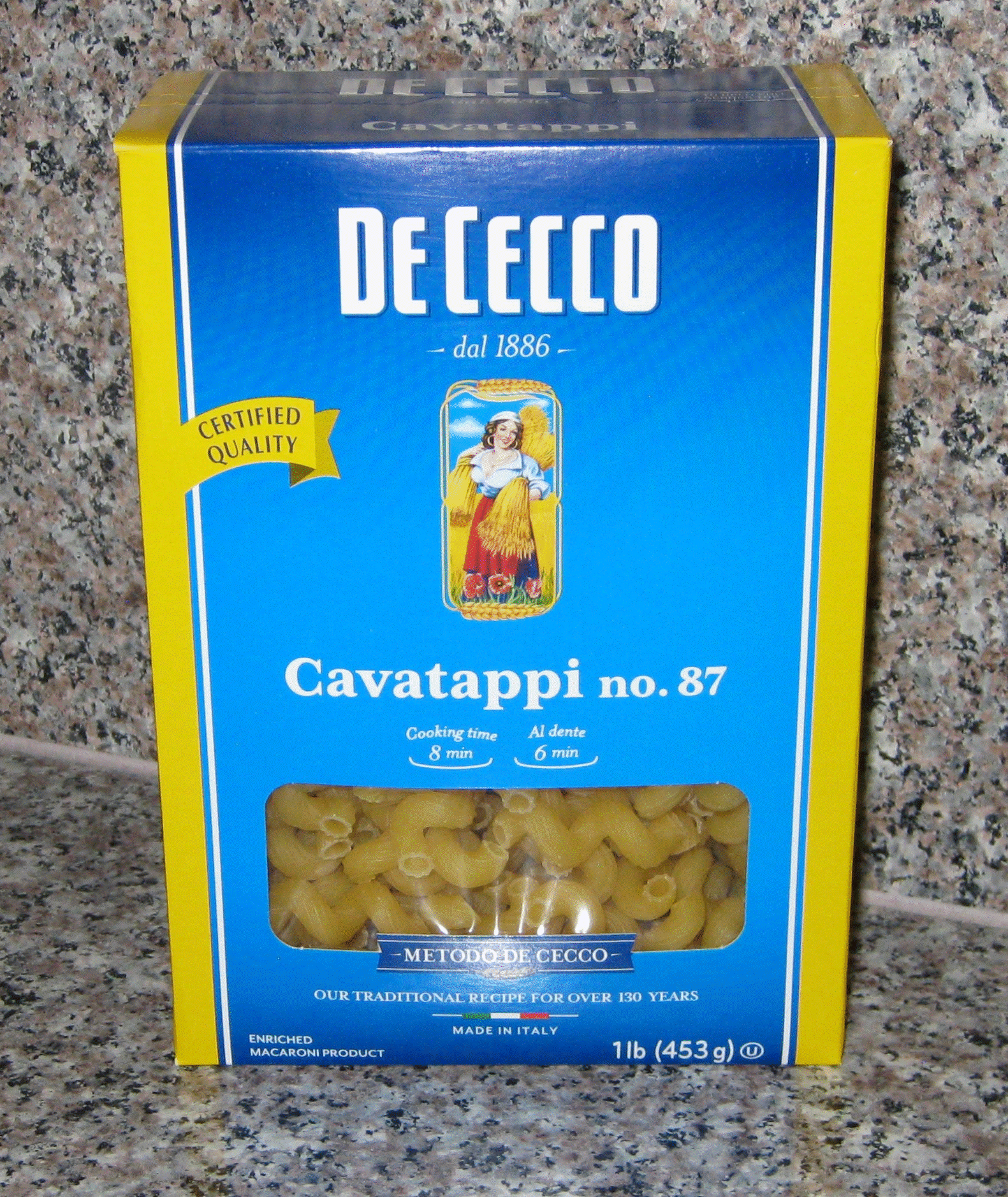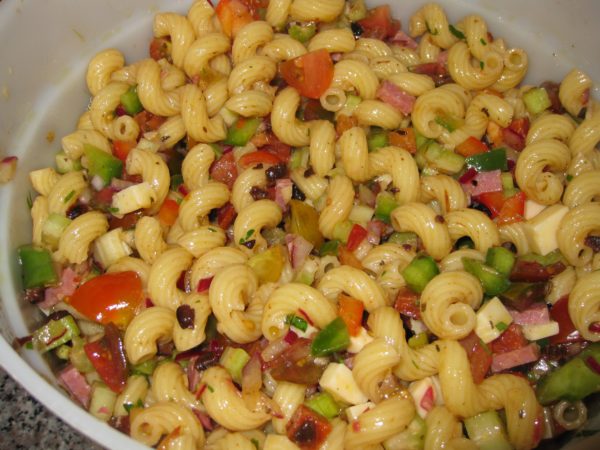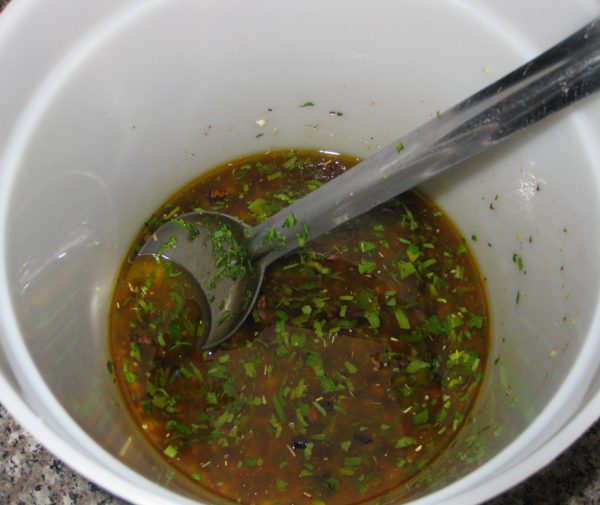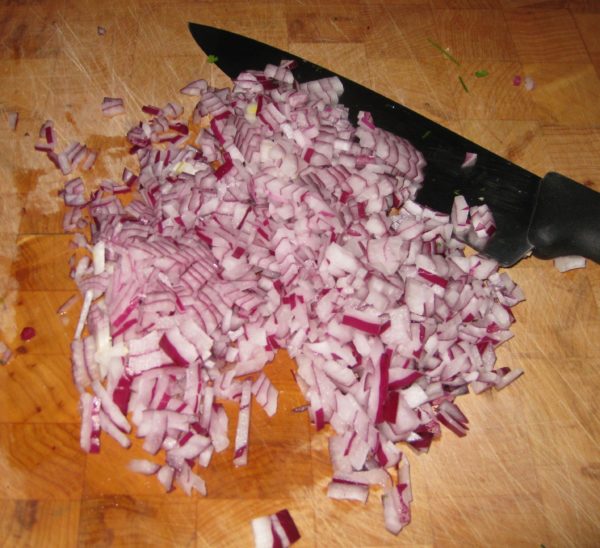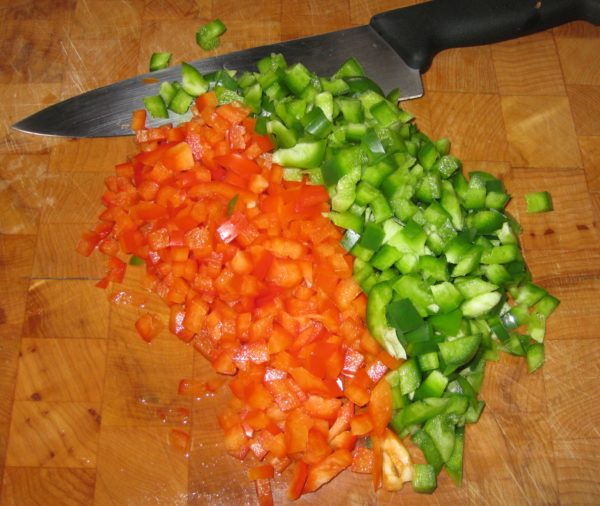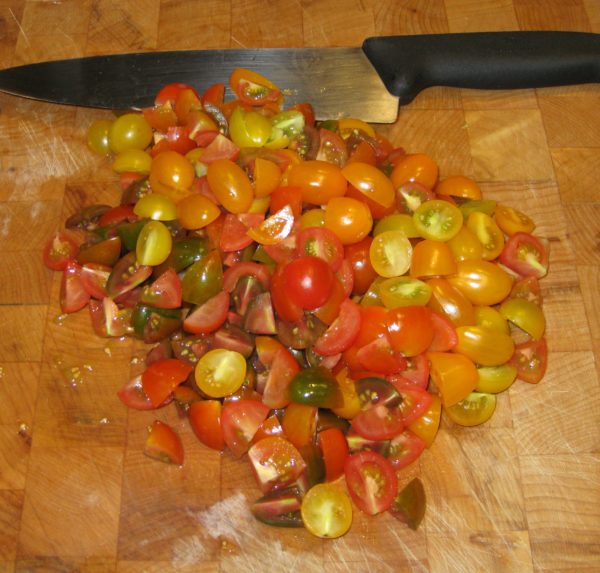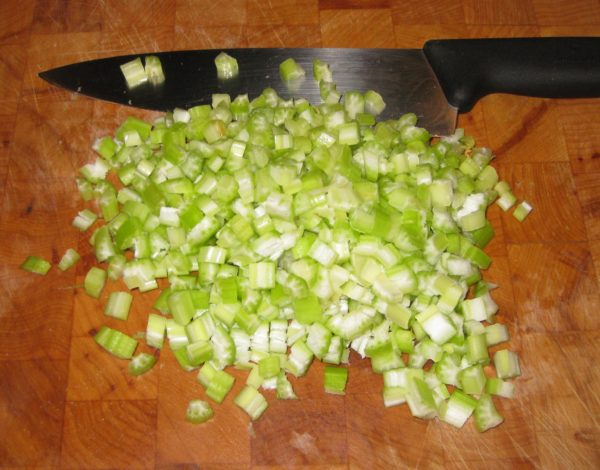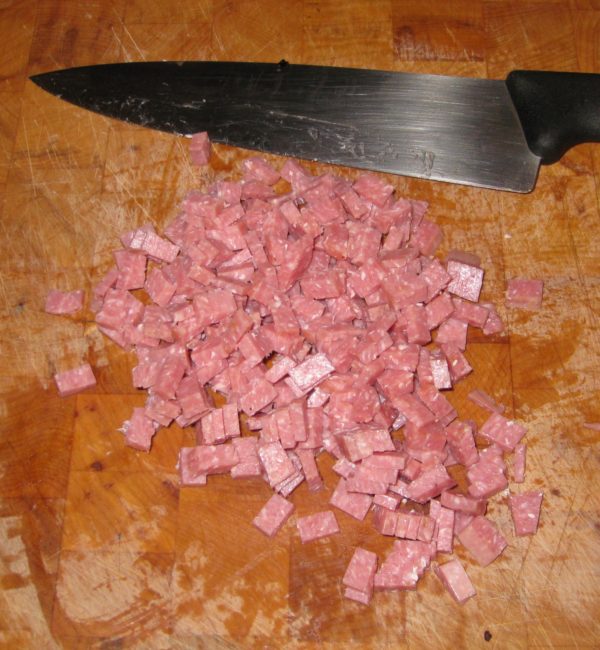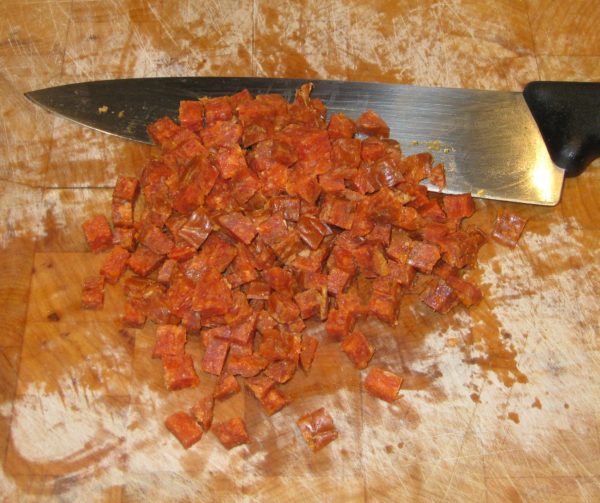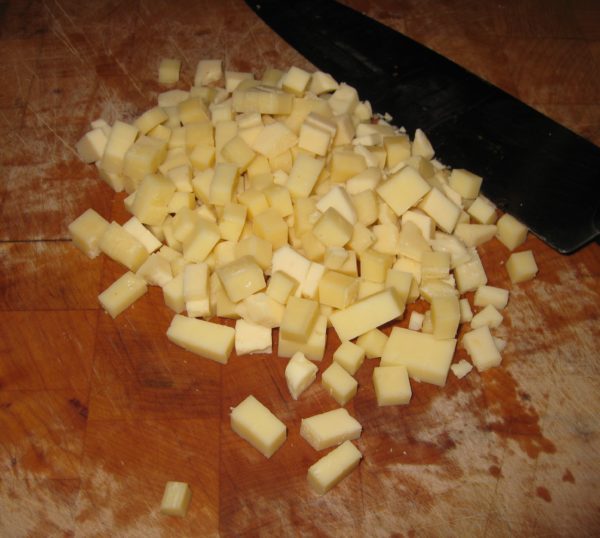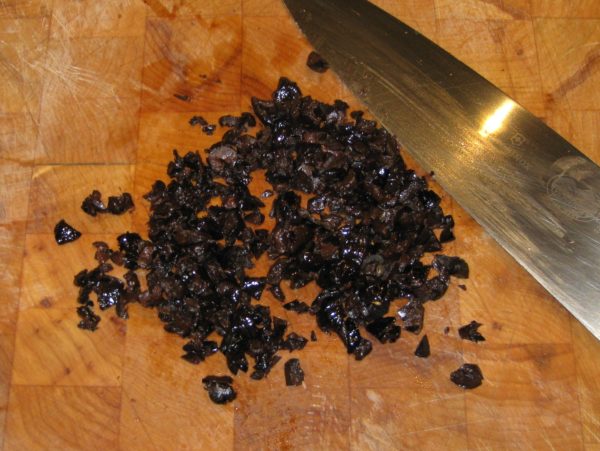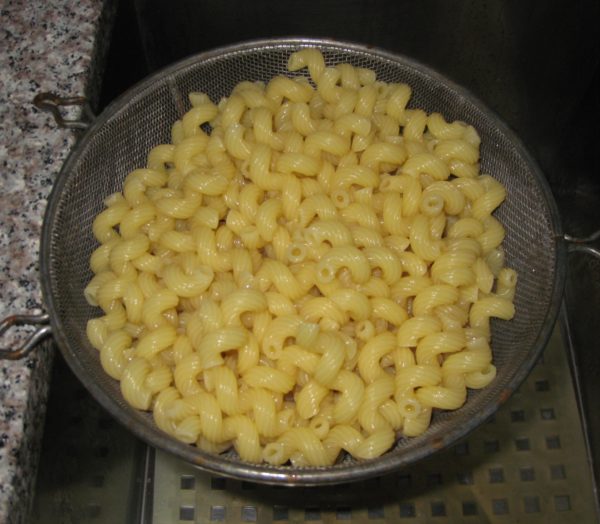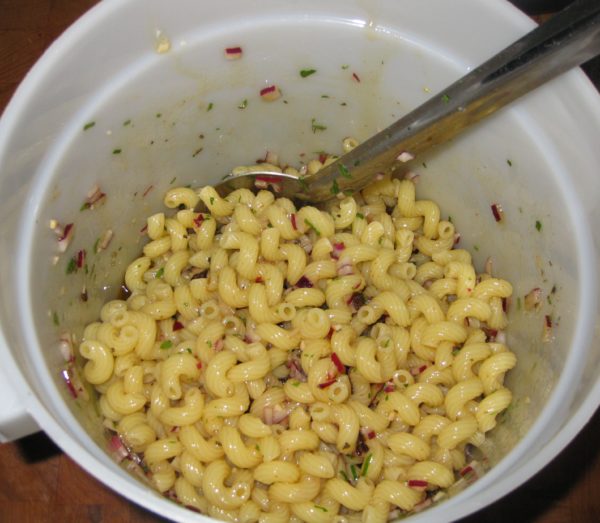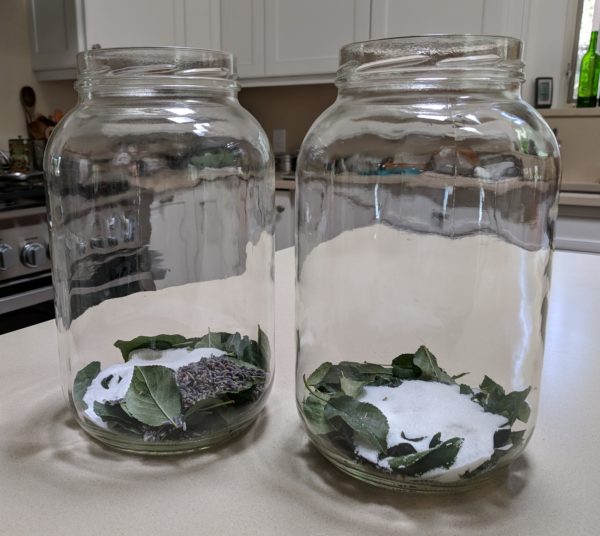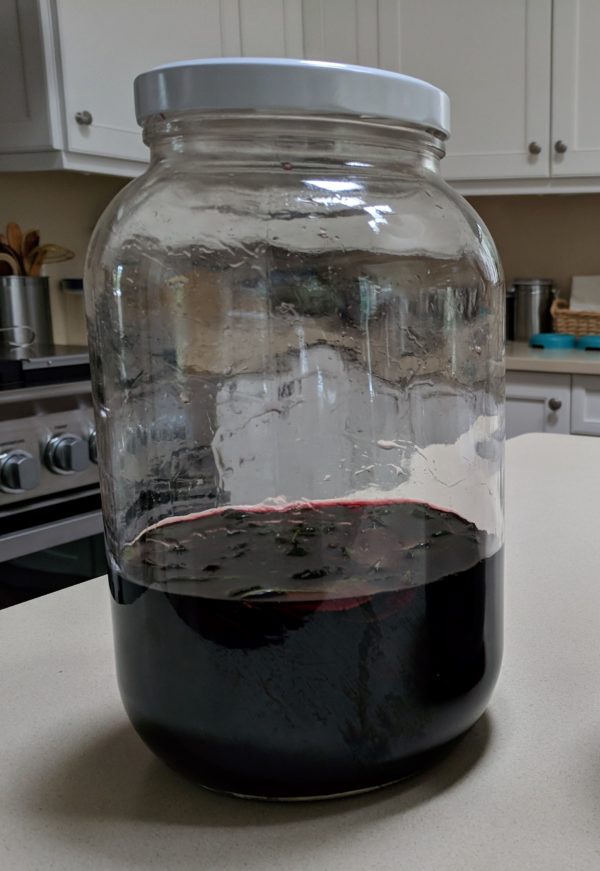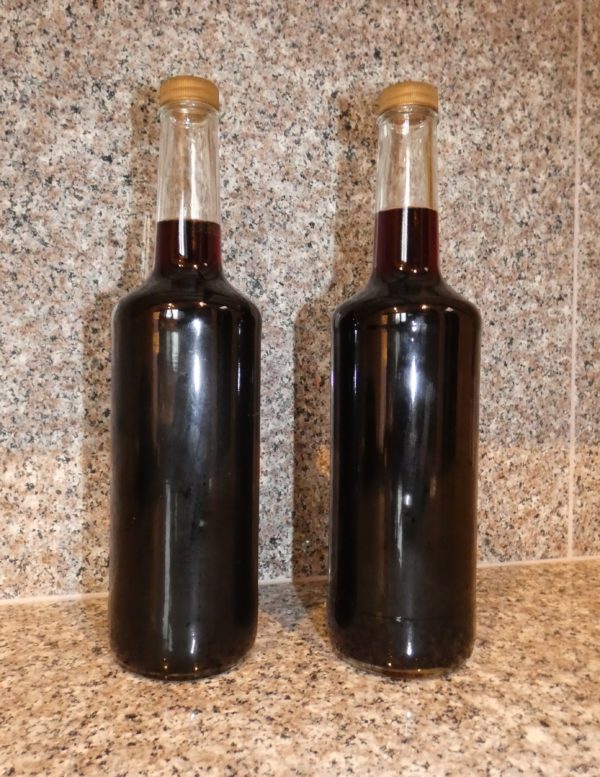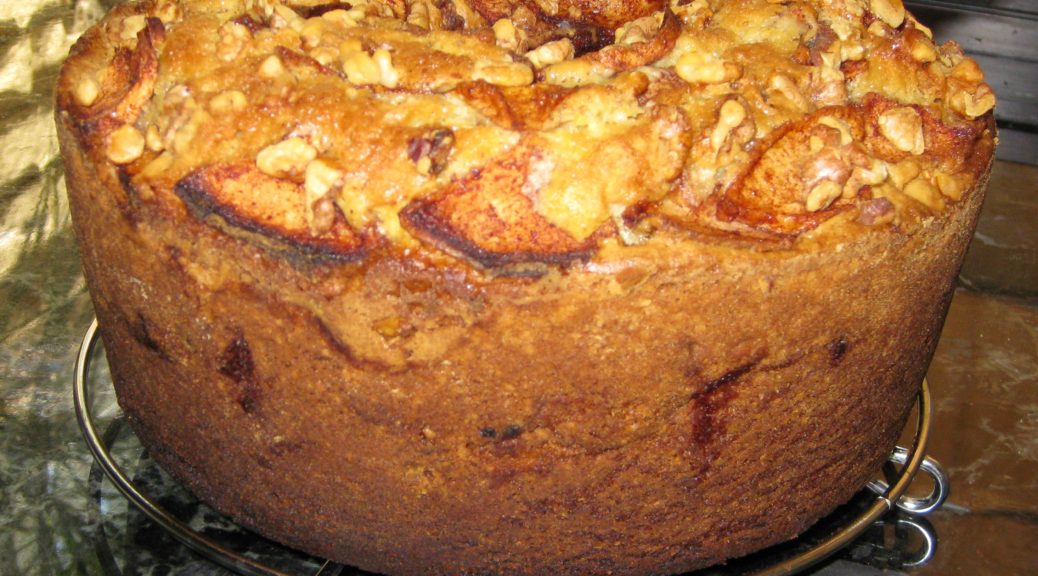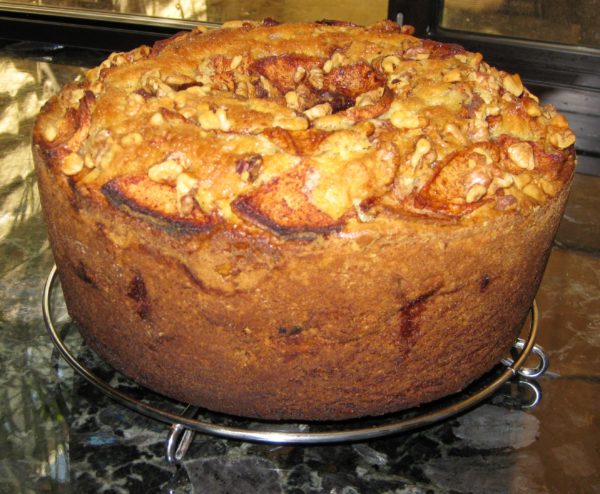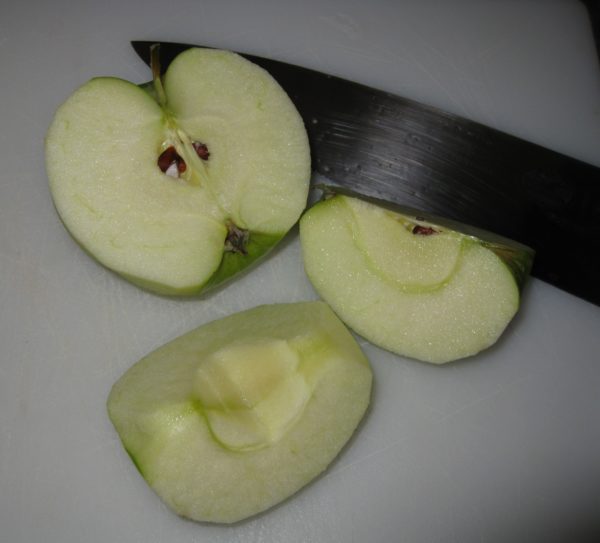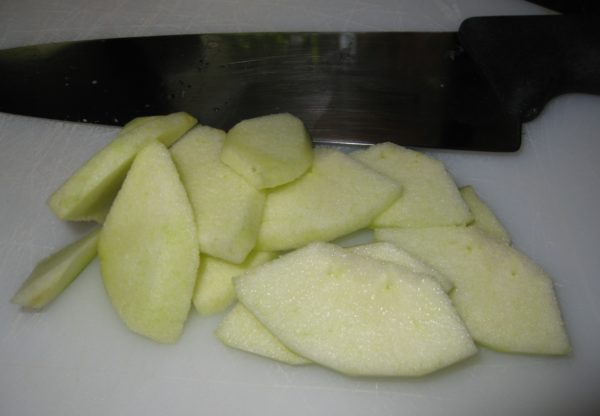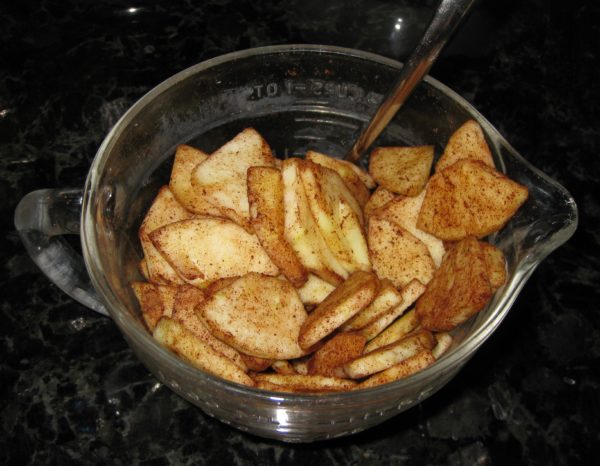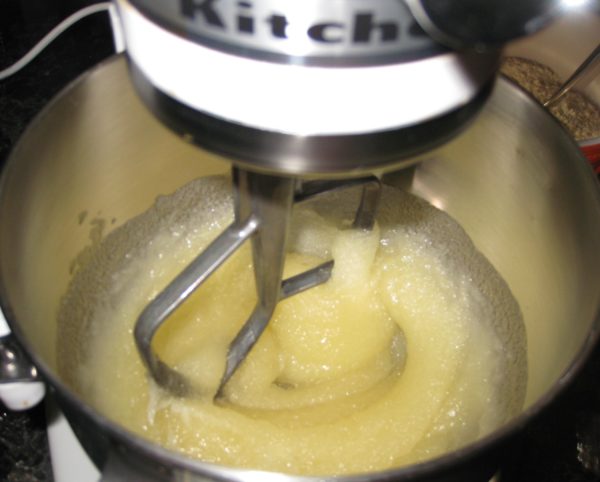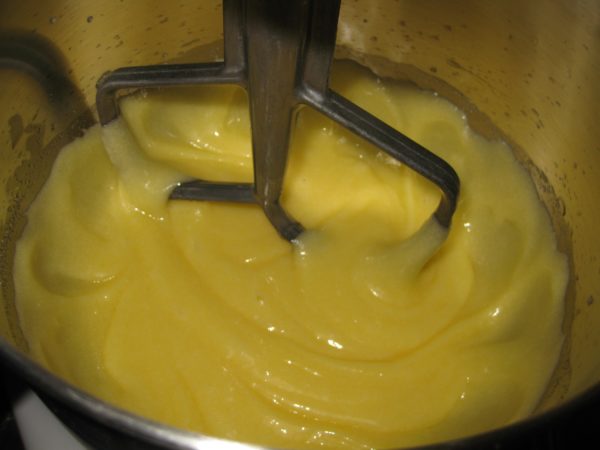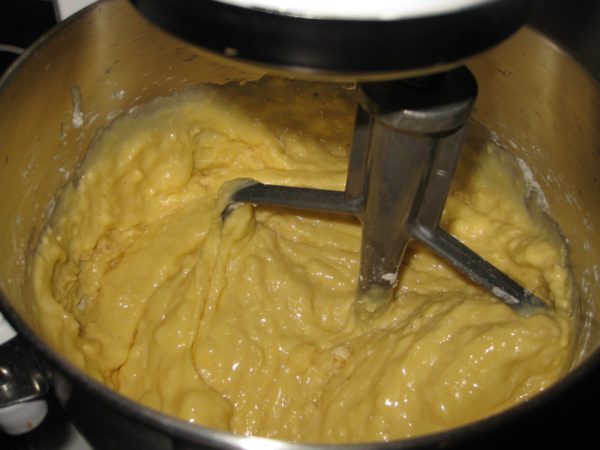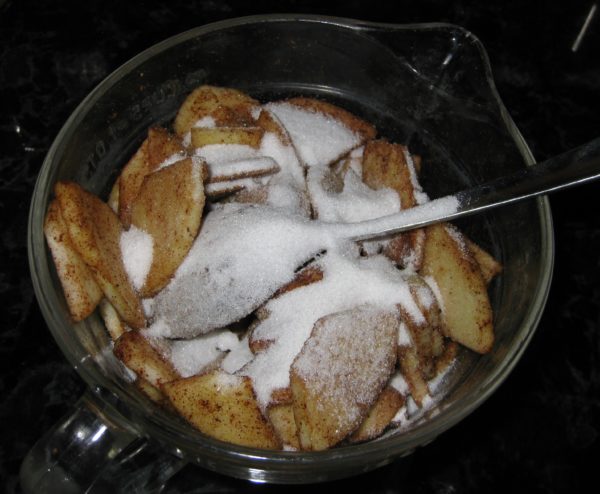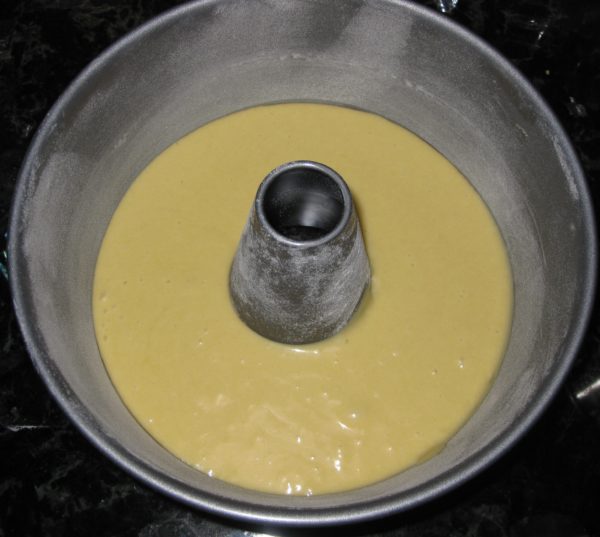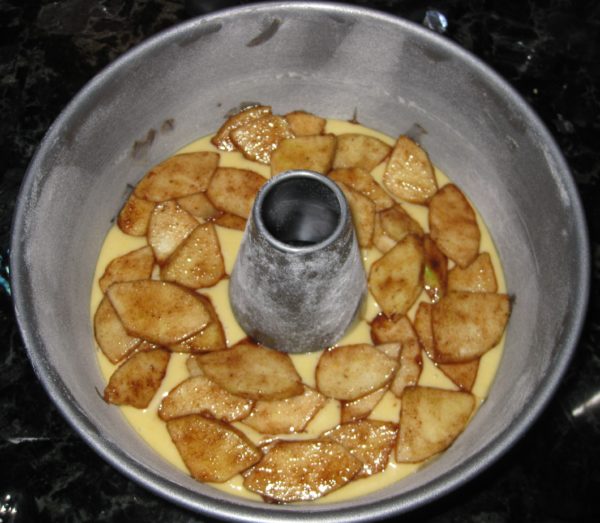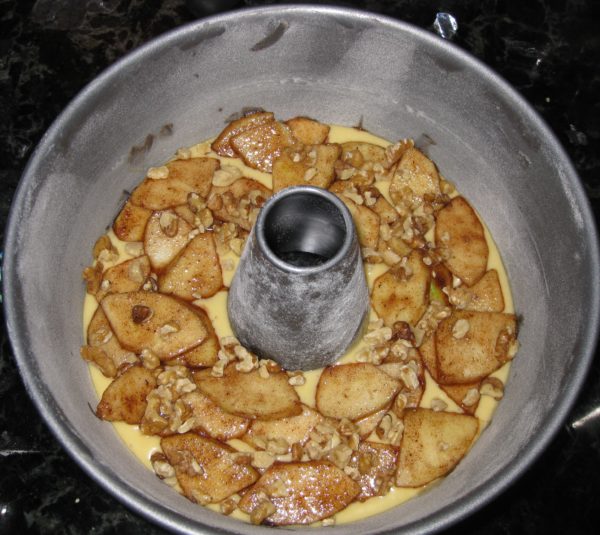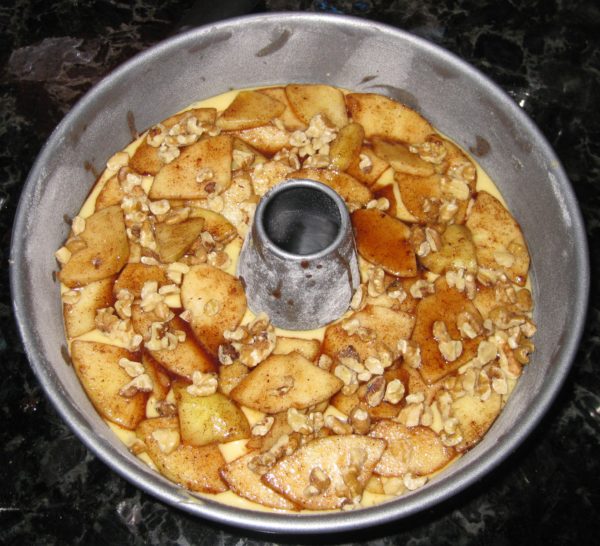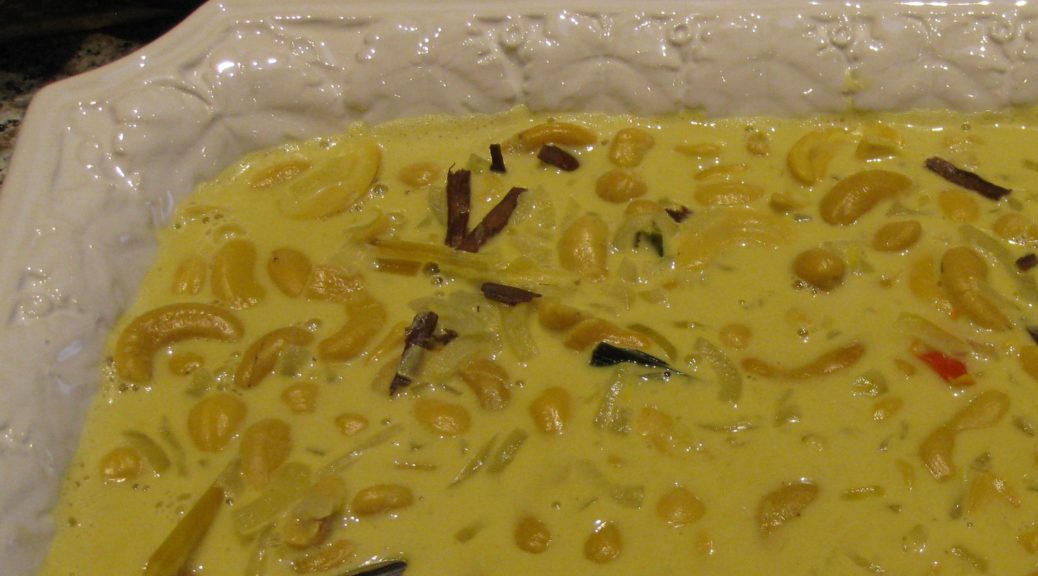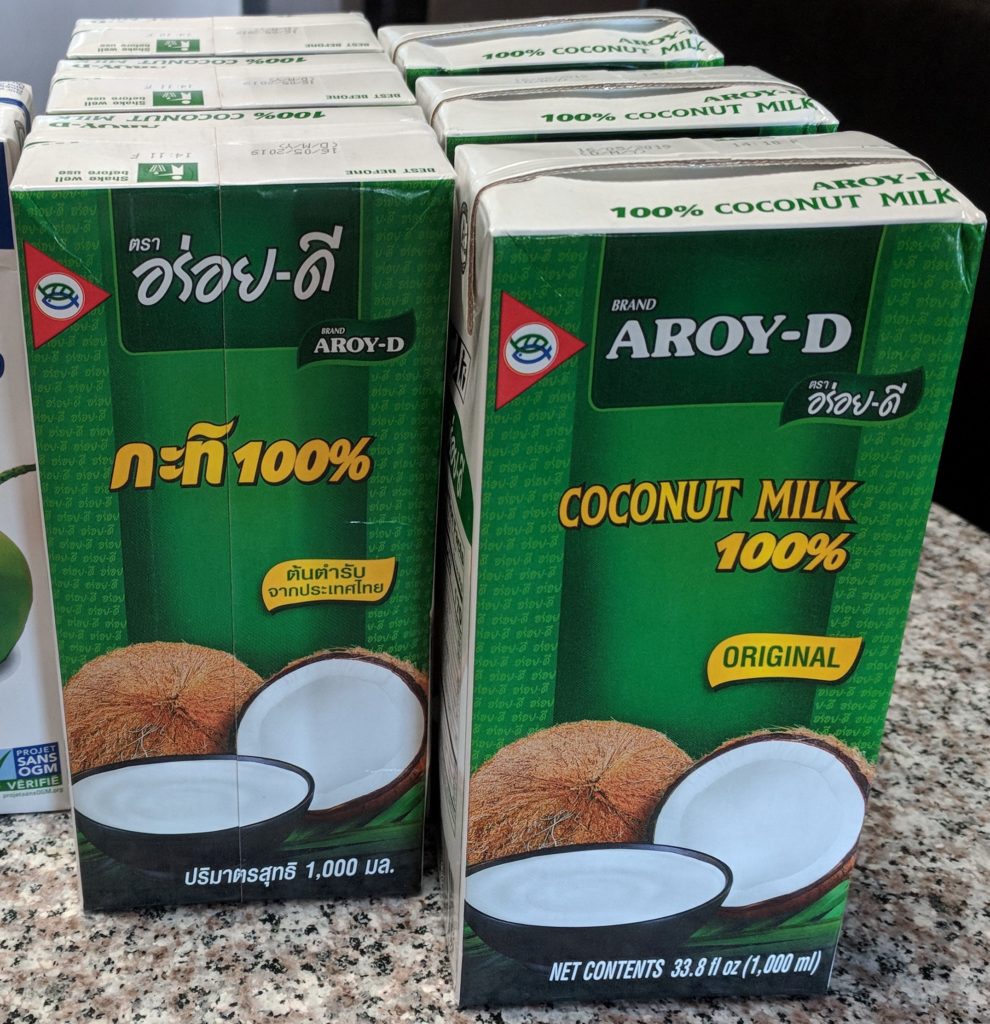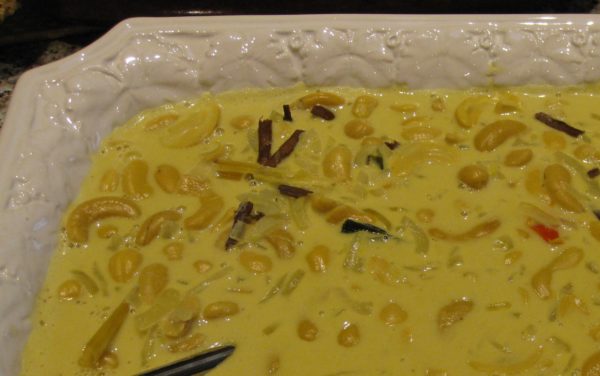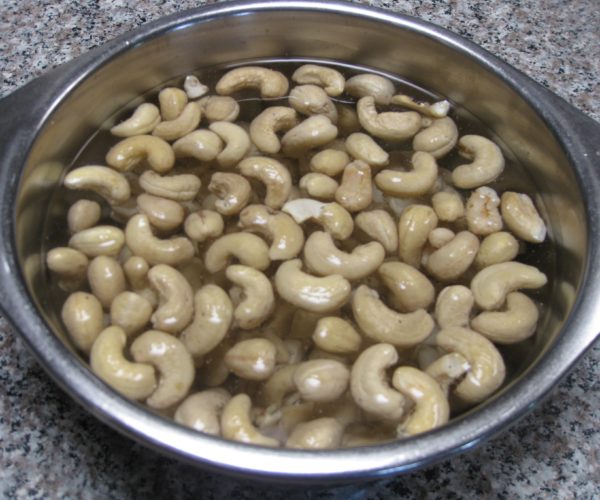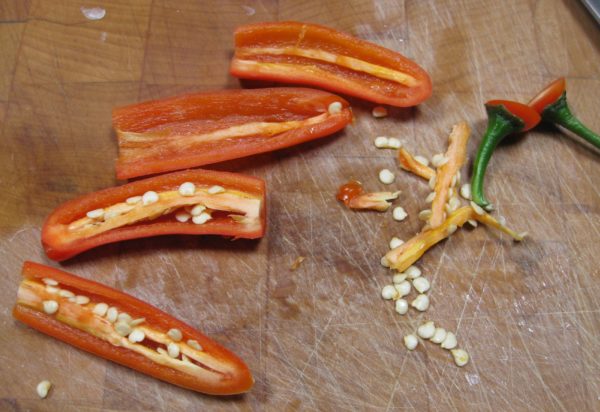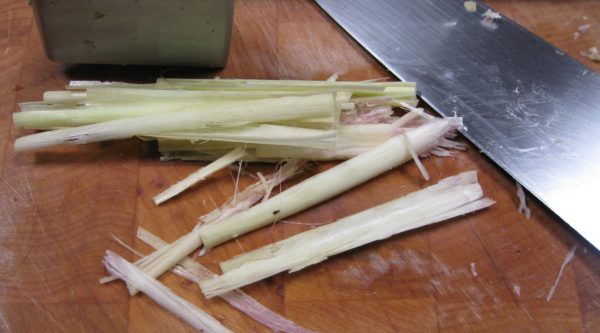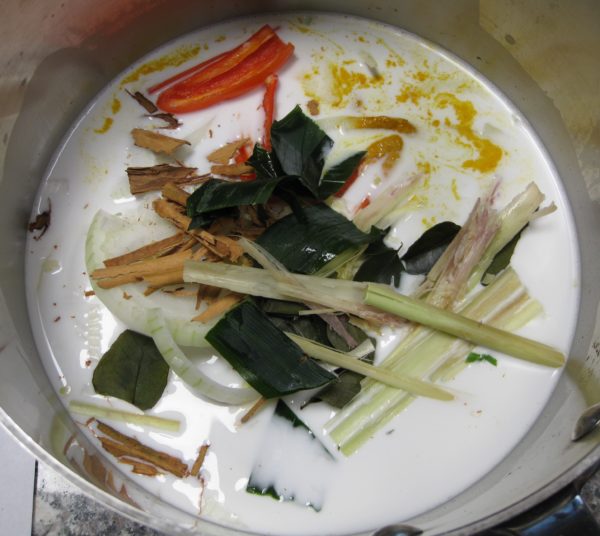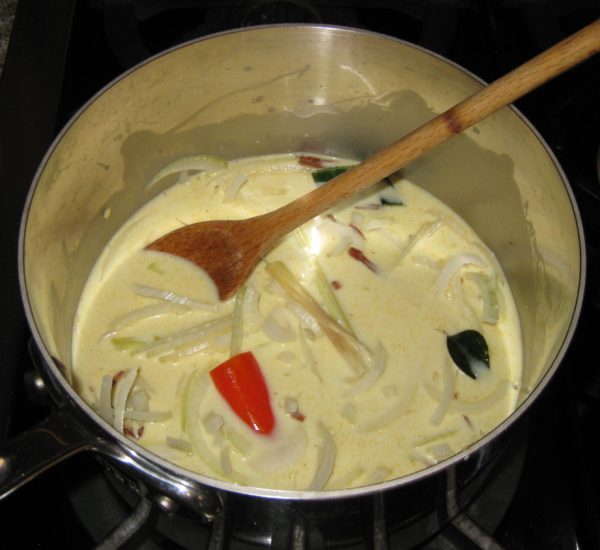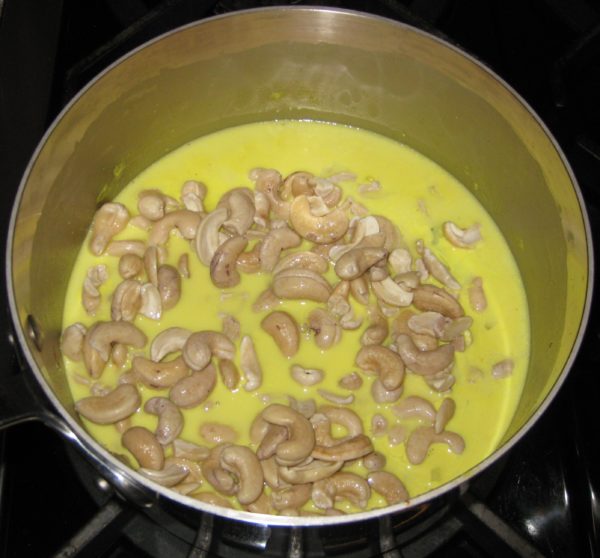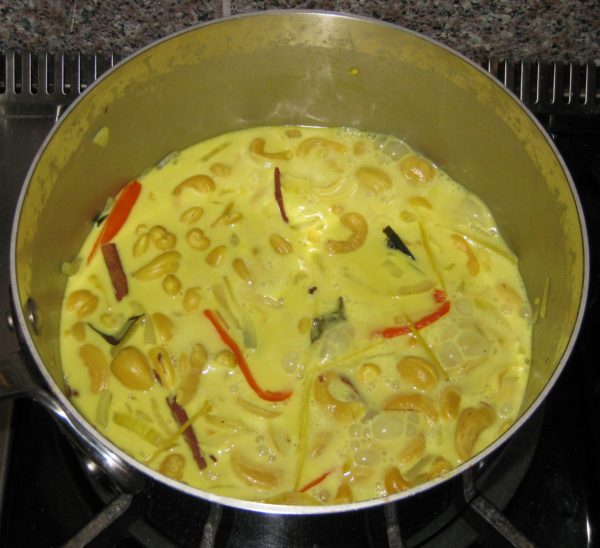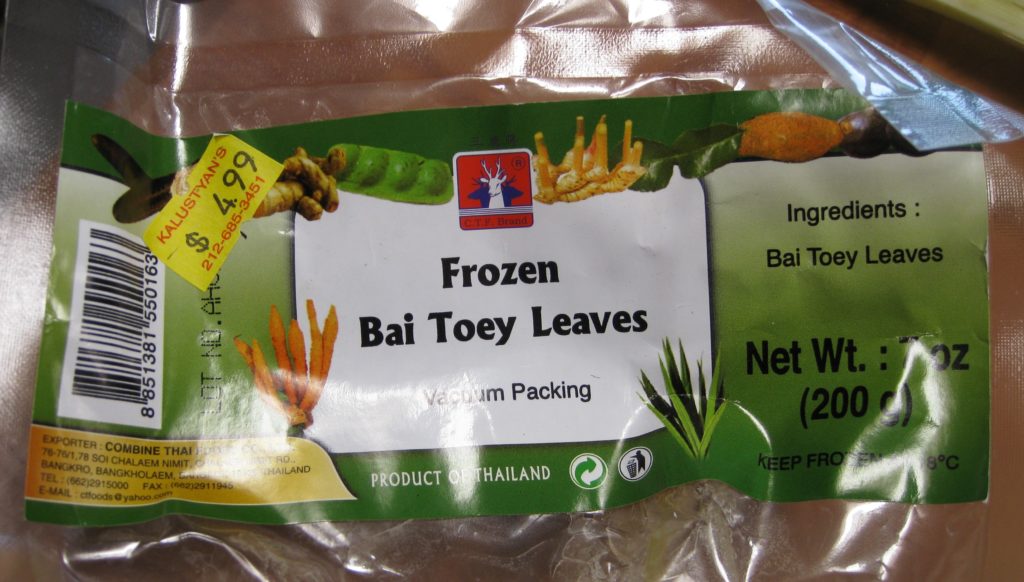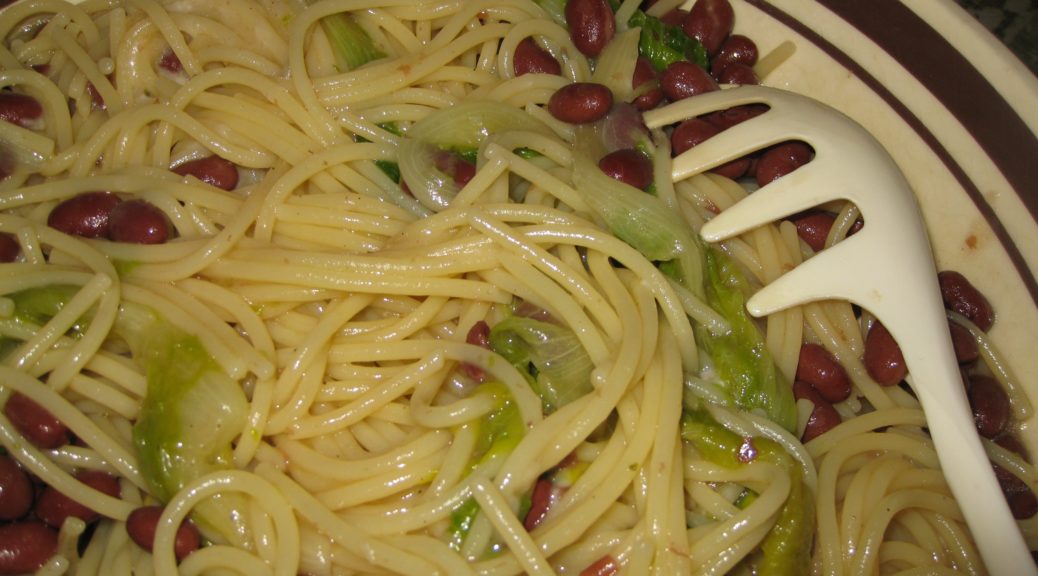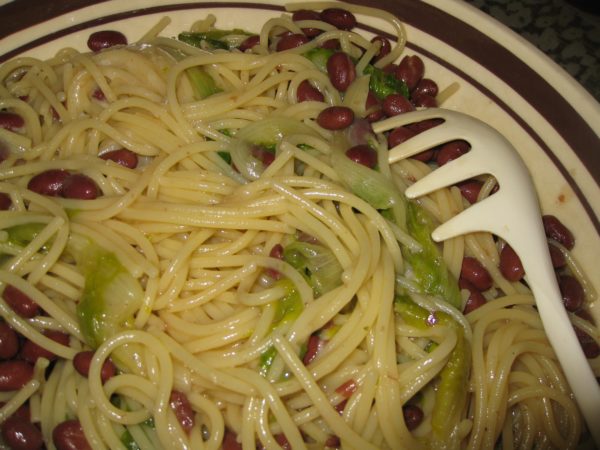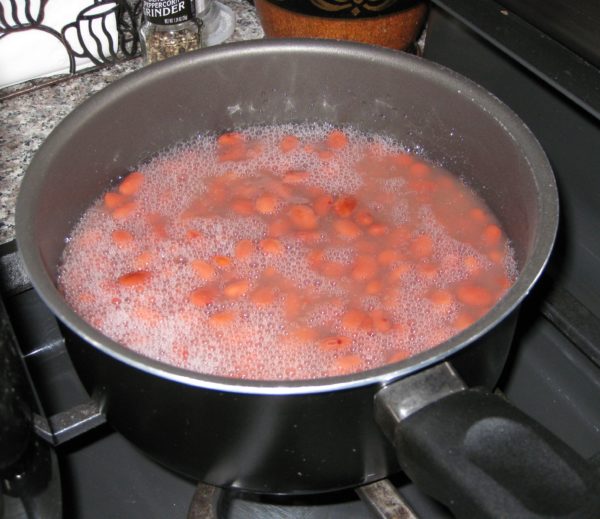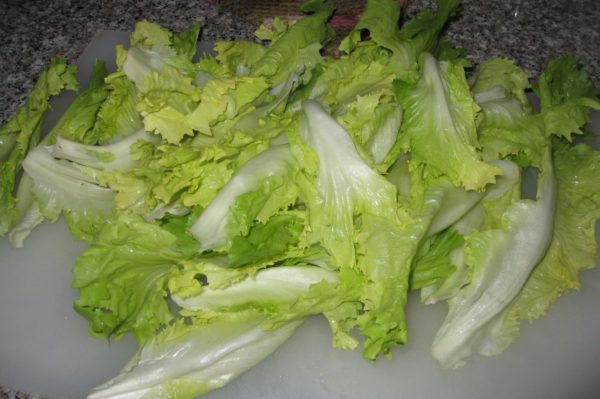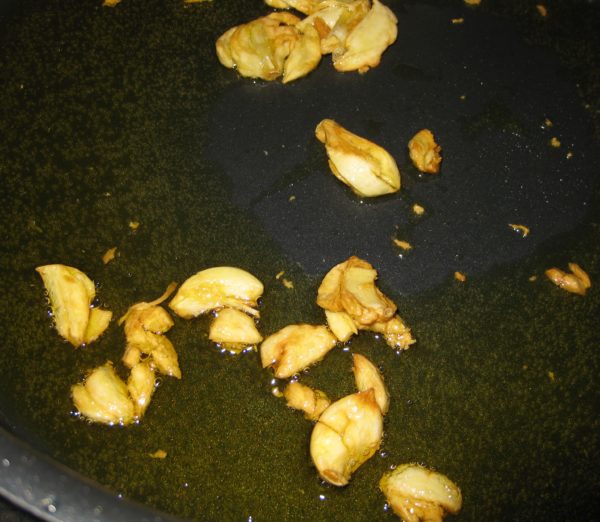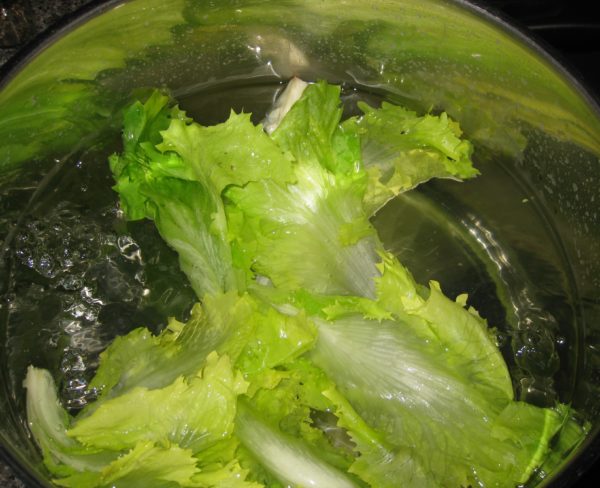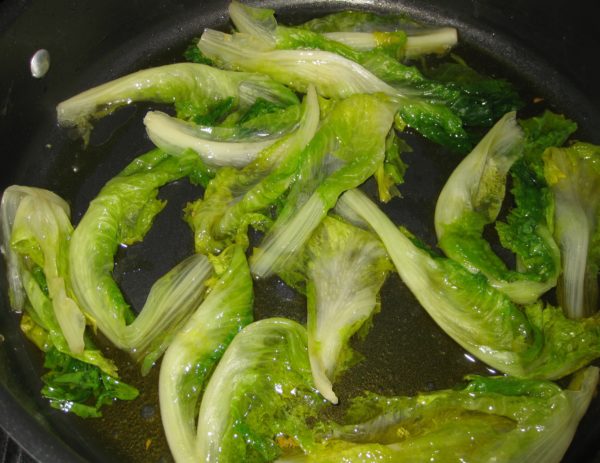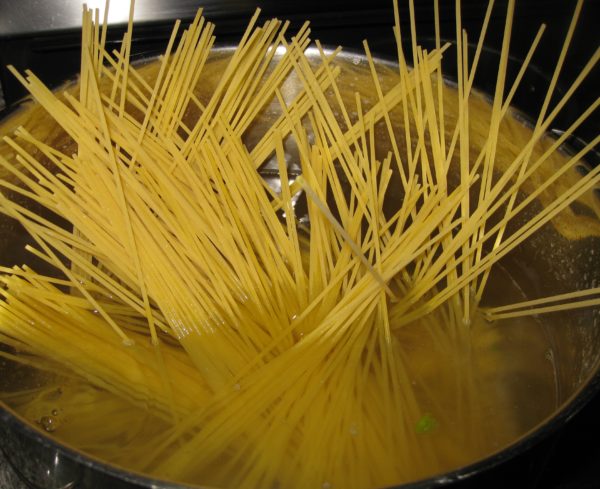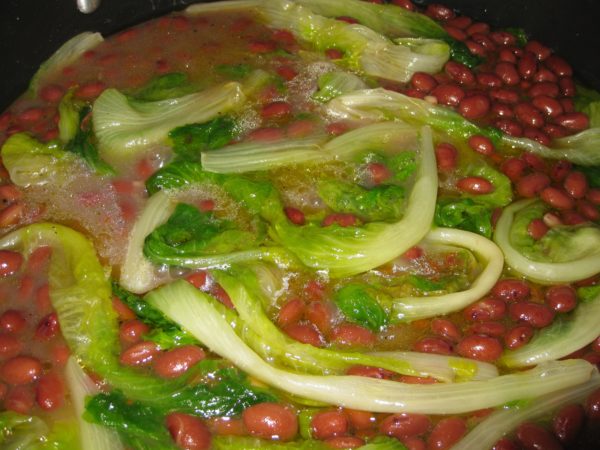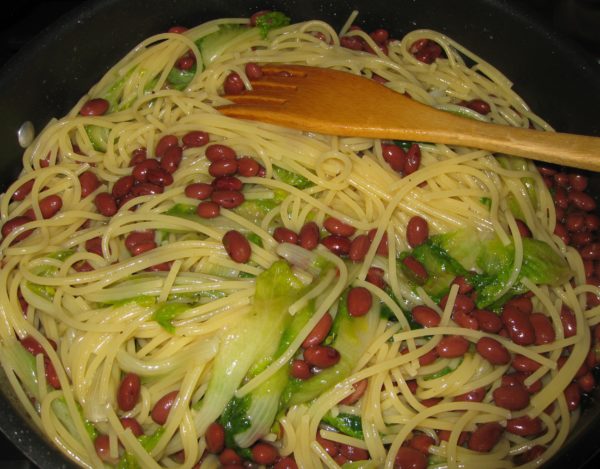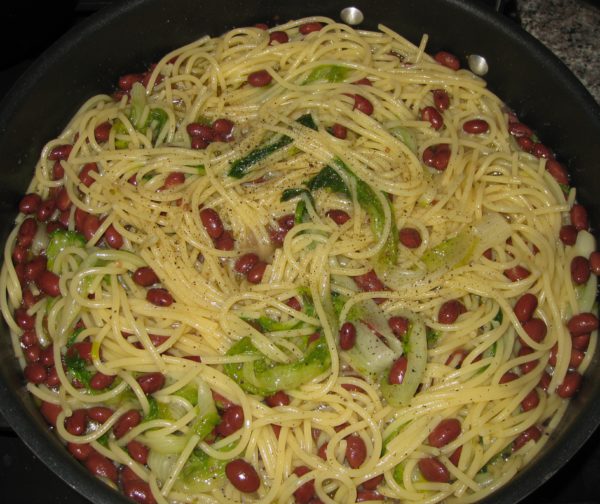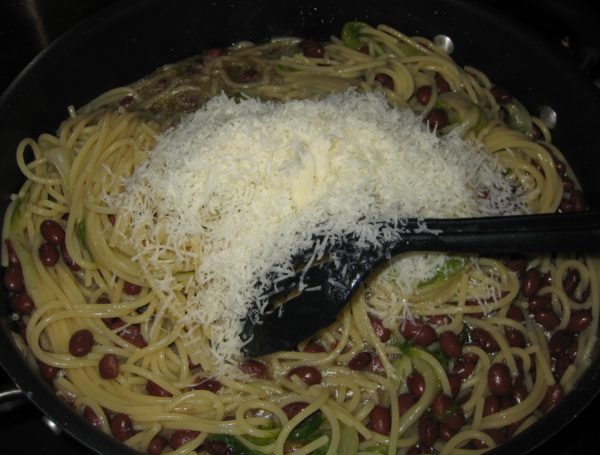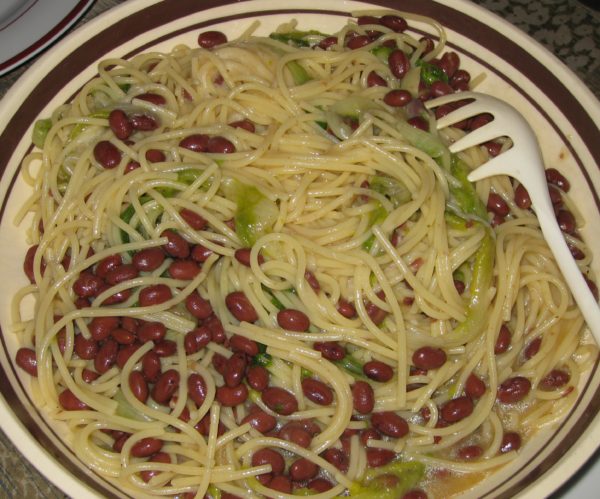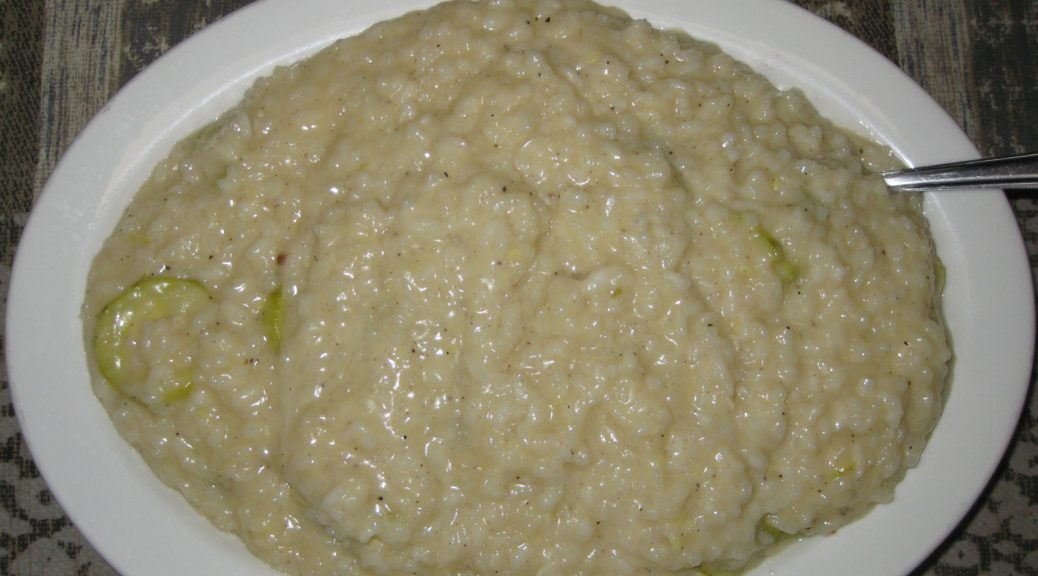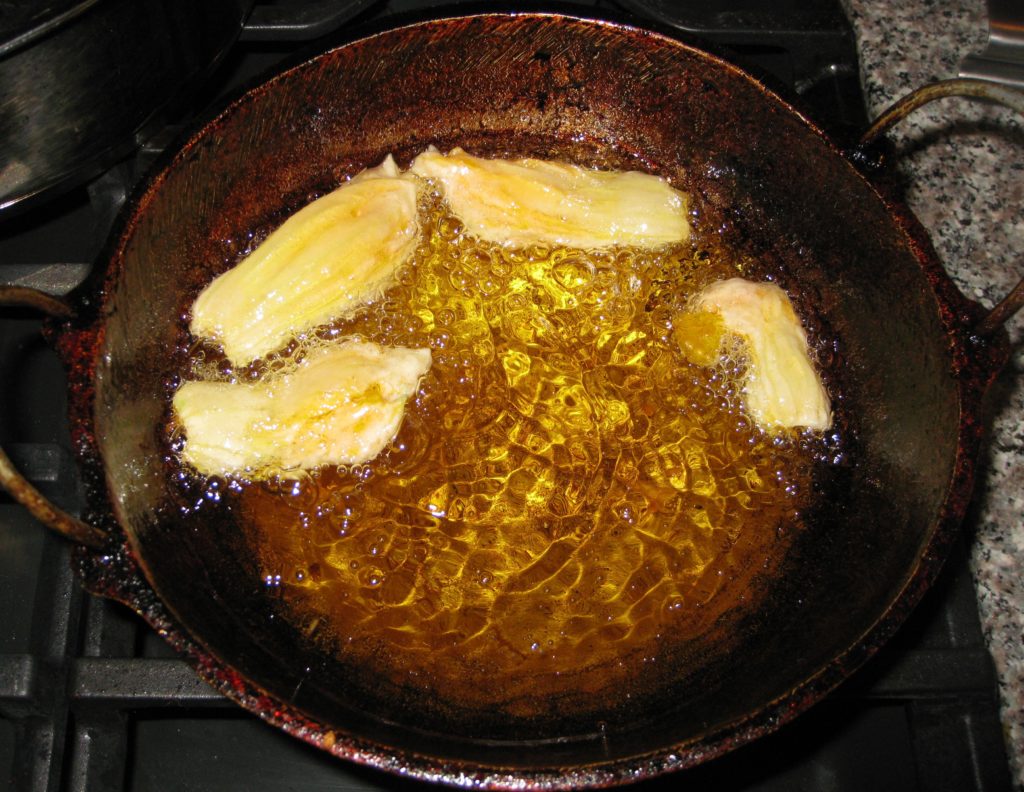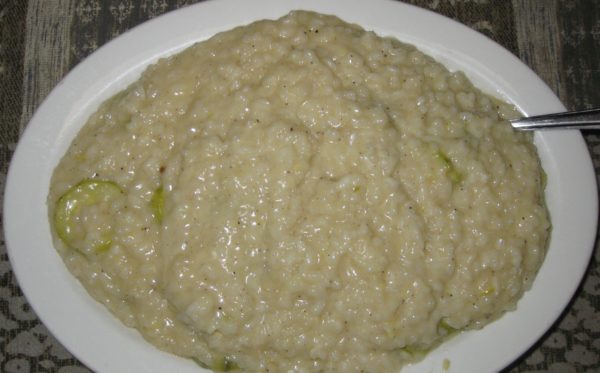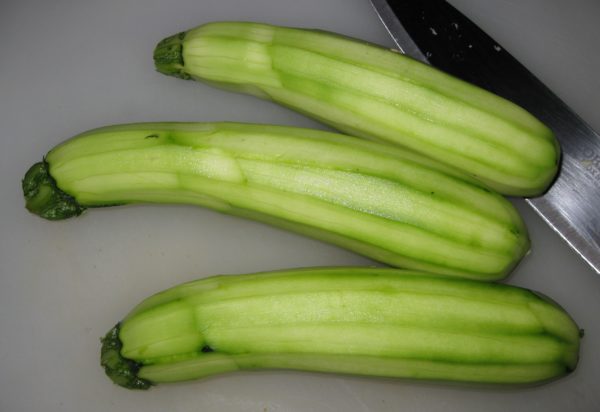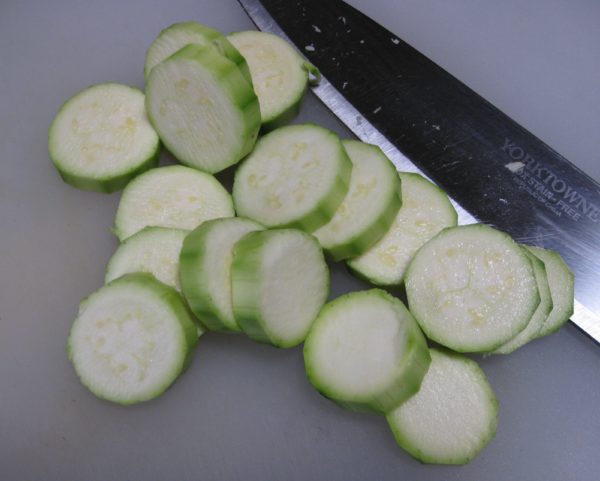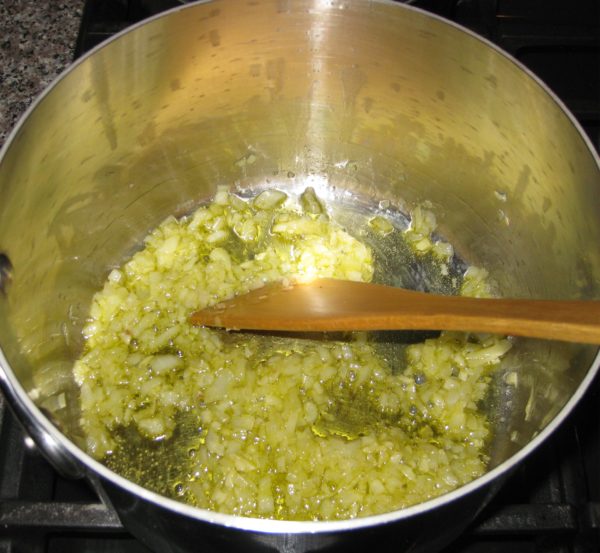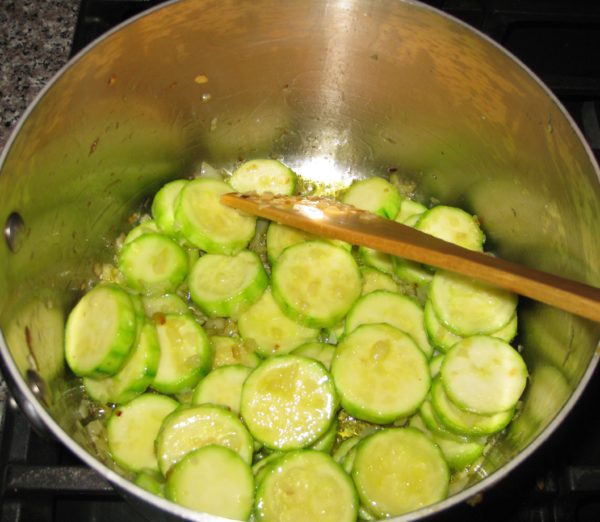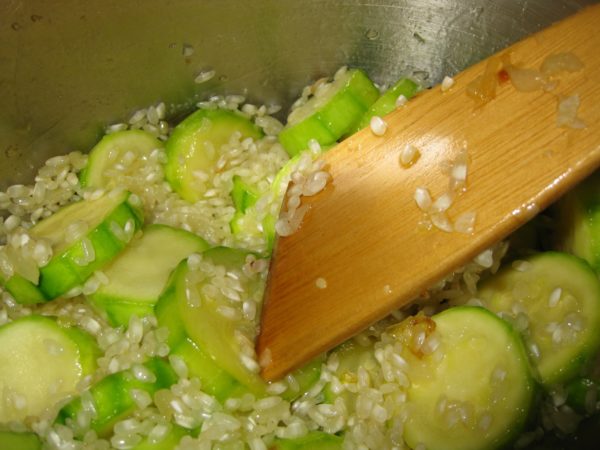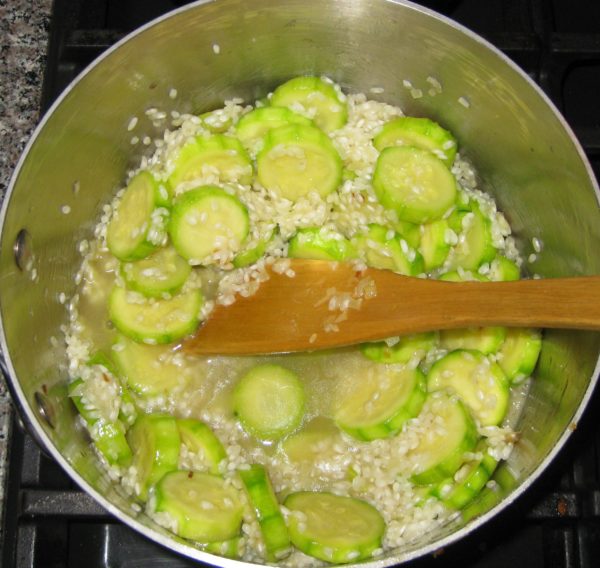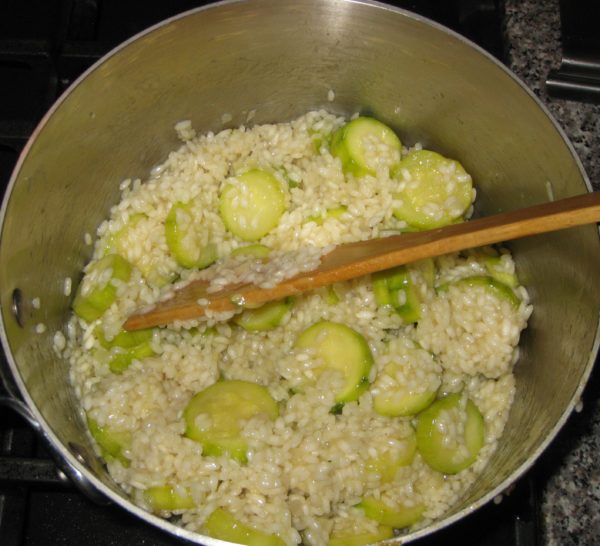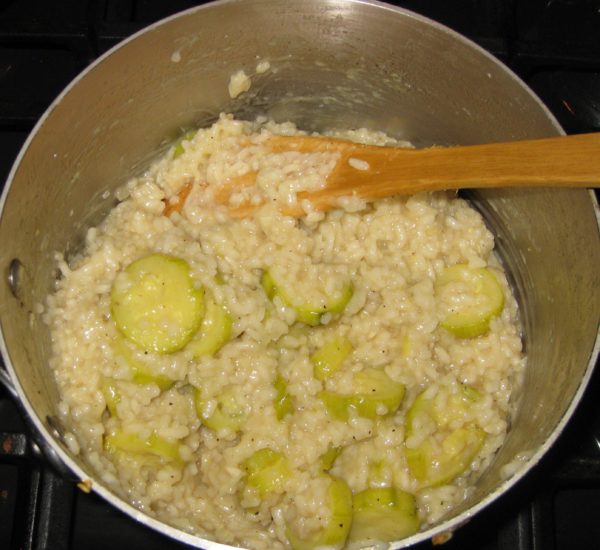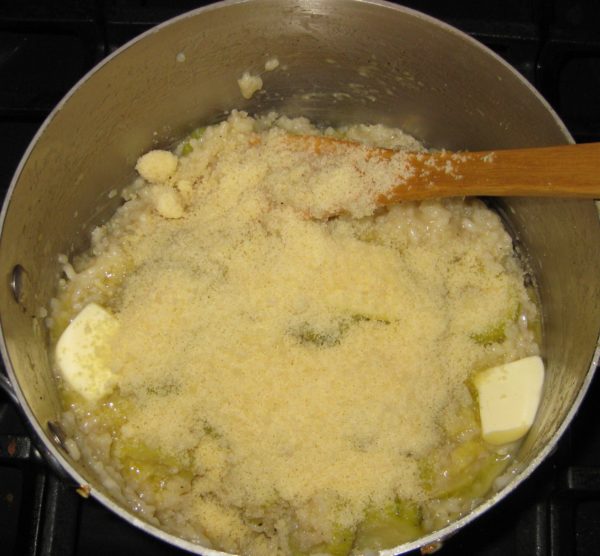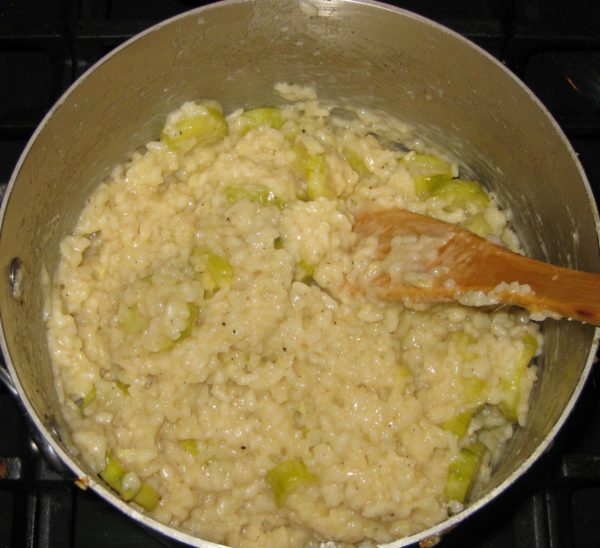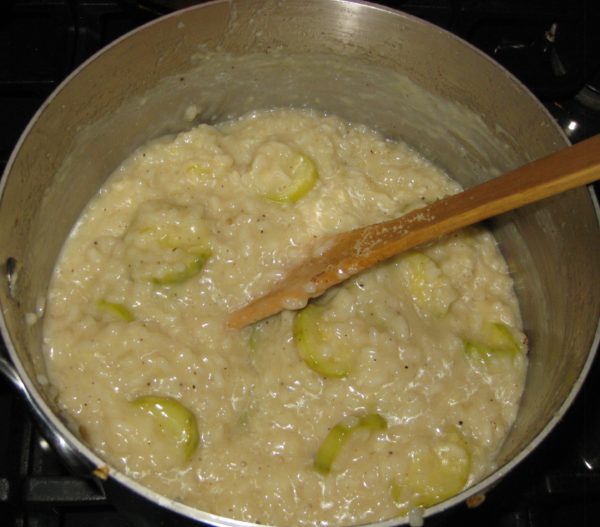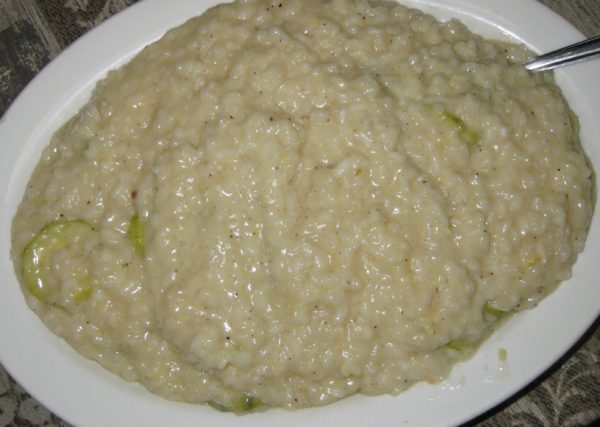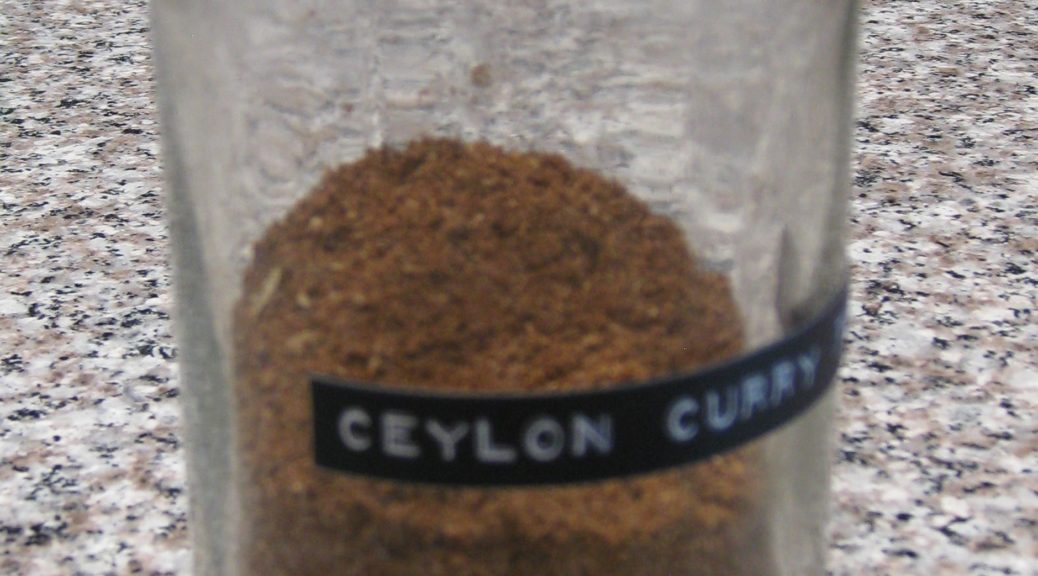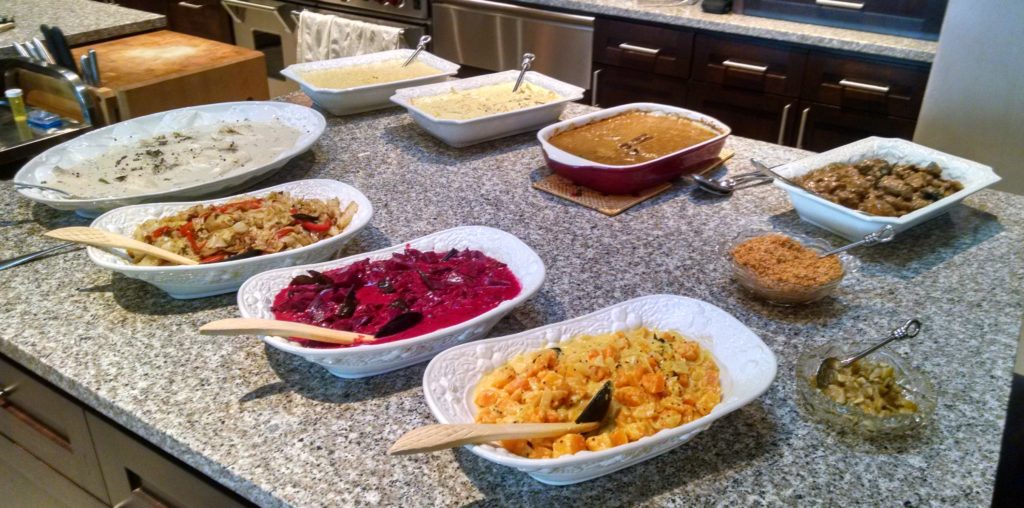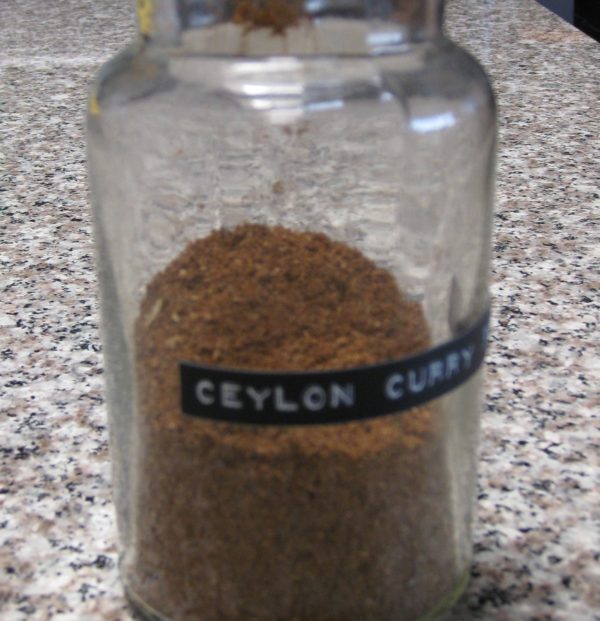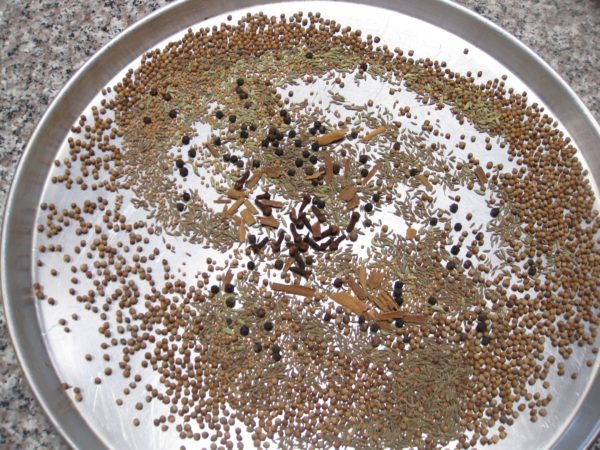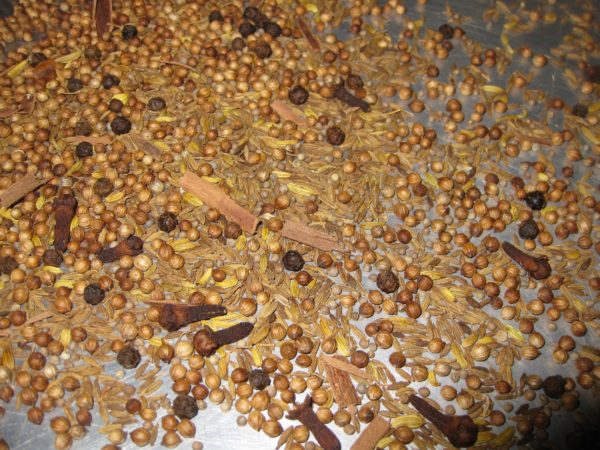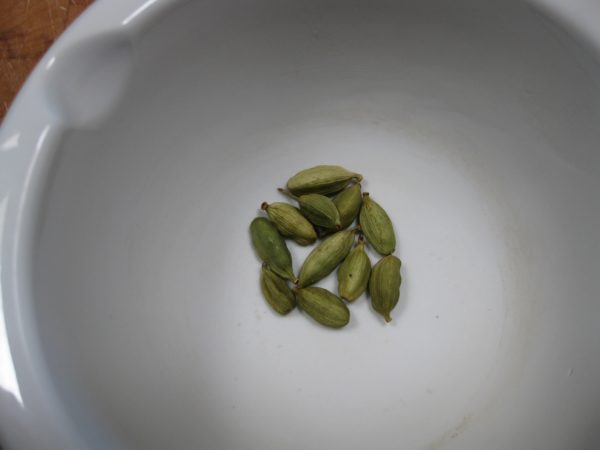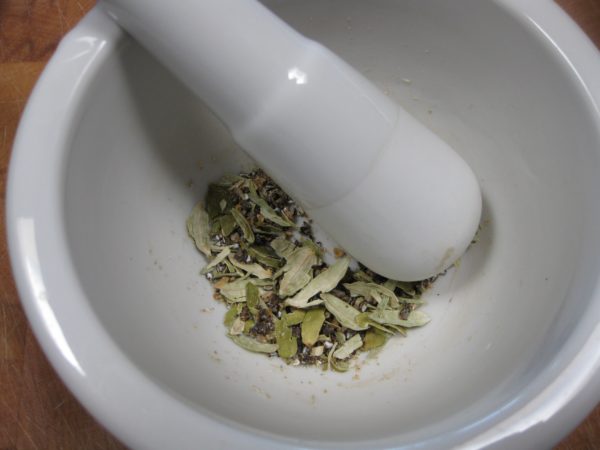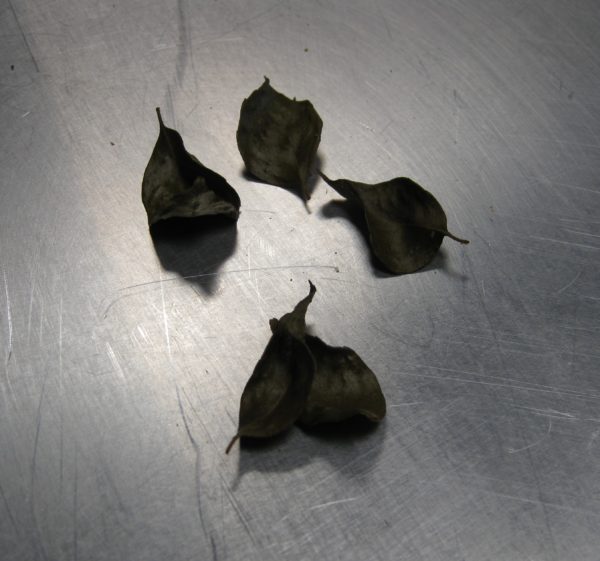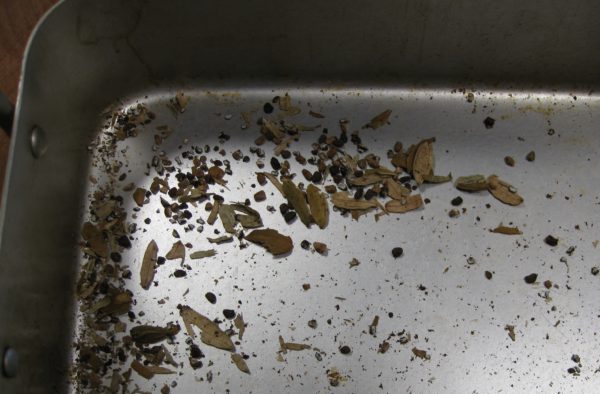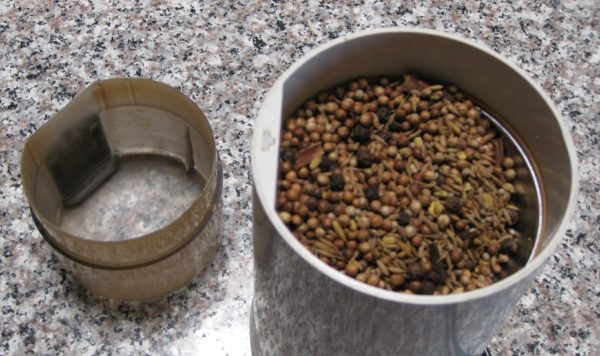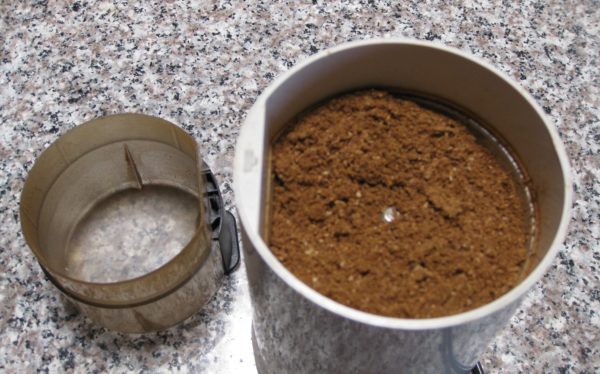January 2, 2019
Cotechino is not a food I grew up eating. It entered my food canon through my husband’s family, Northern Italians all!
Over the years we’ve melded together our different family traditions. Although there’s some variability from year-to-year based on travel plans and invitations to the homes of family and friends, our usual sequence goes something like this.
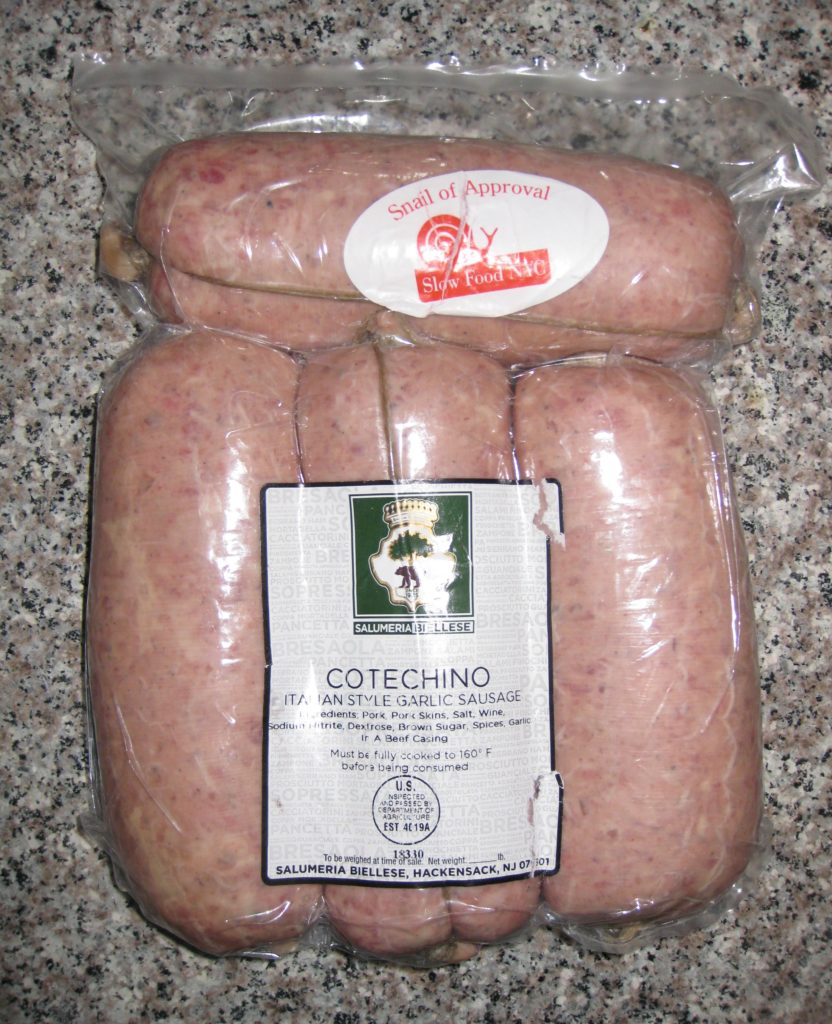
Pasta Ascuitta on Christmas Eve harkens back to my childhood when Christmas Eve dinner was a groaning table full of seafood at Aunt Margie and Uncle Joe’s house. Pasta Ascuitta was only one of many dishes, including Baccala cooked in Tomato Sauce with Green Olives, Braised Stuffed Calamari, Breaded and Fried Cod, Spicy Mussels in a Garlicky Tomato Sauce, and on and on and on. Mostly, now, we have a quiet Christmas Eve dinner with my in-laws at which we serve Pasta Ascuitta and call it quits!
That means somewhere else over Christmastime we have to fit in Baccala since it is a favorite of my in-laws. This year we had it several days before Christmas. I bought the baccala at Eataly in Los Angeles (on the second of my two trips to secure a visa for my three-plus months in Italy that start in early January). It was truly the best baccala I have ever had.
Join our mailing list and you’ll never miss a recipe again!
My family didn’t have any specific traditions for what was served on New Year’s Eve but New Year’s Day always saw Pork, Sauerkraut and Sausage with Dumplings. That meal, repeated in one fashion or another in most homes in Johnstown, PA, pays homage to the original German founders of the town.
Somewhere around New Year’s Day my mother-in-law would make Cotechino with Brovada. Brovada is turnips that are fermented in grape pomace left over from crushing and pressing grapes for wine. Since Brovada is unobtainable (in my experience) in the United States, my mother-in-law would pickle turnips in red wine vinegar to create a reasonable substitute. The turnips are peeled and shredded before cooking. Brovada ends up tasting remarkably similar to sauerkraut.
Before Frank and I started spending New Year’s in Palm Springs, we would host a New Year’s Eve dinner at Villa Sentieri at which we served Cotechino as the appetizer course. Although Cotechino is typically served with Brovada in Friuli, it is served with lentils in most of the remainder of Northern Italy. I always opted for lentils for the New Year’s Eve dinner, leaving my mother-in-law to make it a second time with Brovada.
Many of our traditions got up-ended this year. For Christmas Eve dinner we had Cotechino with Sauerkraut! My mother-in-law did not make Brovada this year and said she preferred to have the Cotechino with Sauerkraut rather than Lentils. I used the sauerkraut portion of my recipe for Pork with Sauerkraut. It was a great combination. I also made Dumplings just because everything is better with dumplings.
Follow us on your social media platform of choice
That means we didn’t have Pasta Ascuitta on Christmas Eve for the first time in I-don’t-know-how-many years!
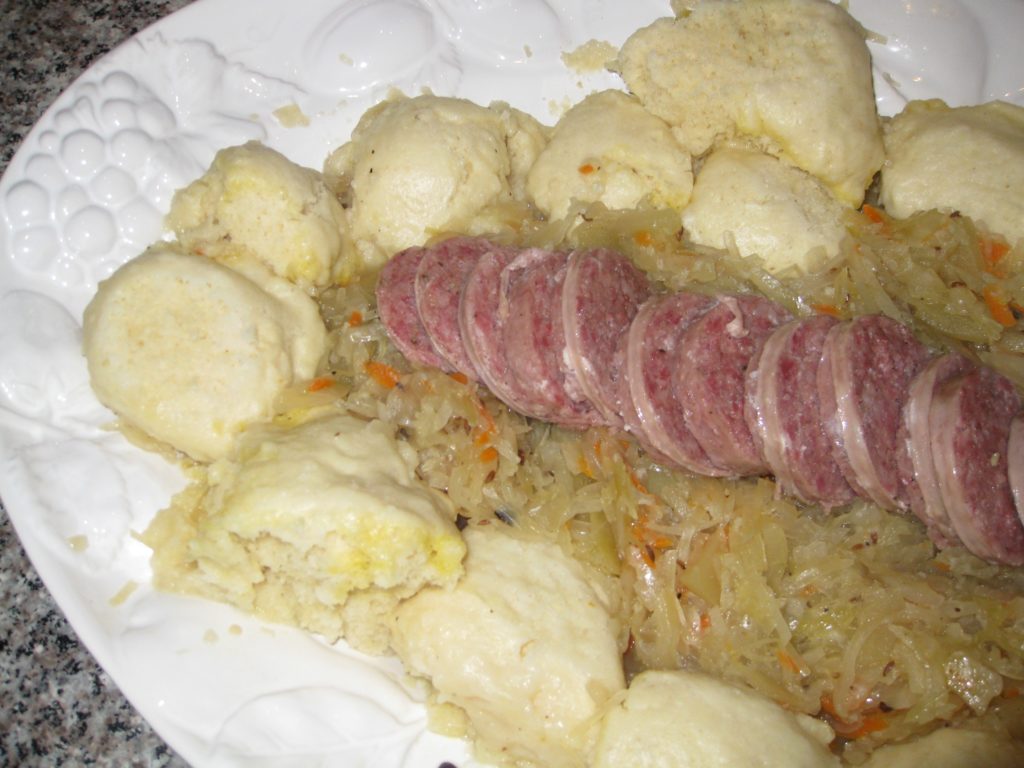
Even though we didn’t host New Year’s Eve dinner this year, I was assigned the task of making the first course for the dinner hosted by our friends John O’Malley and Bob Reddington in Palm Springs. I jumped at the chance to make Cotechino with Lentils. The Cotechino came from Eataly in Los Angeles, and like the Baccala, was excellent.
As I’m writing this blog on the first of the year, and contemplating what to make for dinner today after a holiday season marked by over-consumption and with no time to recover before leaving for my three months in Italy on January 7th, I think we may just have Spaghetti with Garlic, Oil and Red Pepper. Pasta Ascuitta will need to wait for another year!
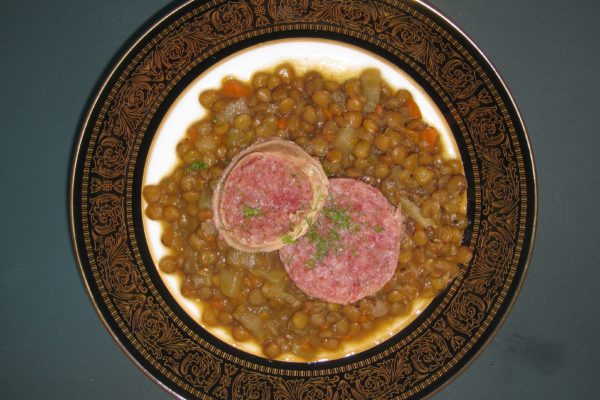
| Prep Time | 20 minutes |
| Cook Time | 3 1/2 hours |
| Servings |
people as an appetizer
|
- 1 pound green lentils
- 1/4 cup extra virgin olive oil
- 2 carrots finely diced or chopped in a food processor
- 1 large fennel bulb diced
- 1 onion finely diced
- 2 cloves garlic minced
- 8-9 cups chicken or vegetable broth preferably unsalted
- 1 bay leaf
- 2 1/2 teaspoons salt plus more to taste
- 1 teaspoon black pepper freshly ground, plus more to taste
- 2 cotechino sausages approximately 2 1/2 pounds total
- water to cover
- fennel fronds minced for garnish, if desired
Ingredients
For the Lentils
For the Cotechino
|

|
- Cut off the stalks of the fennel before dicing.
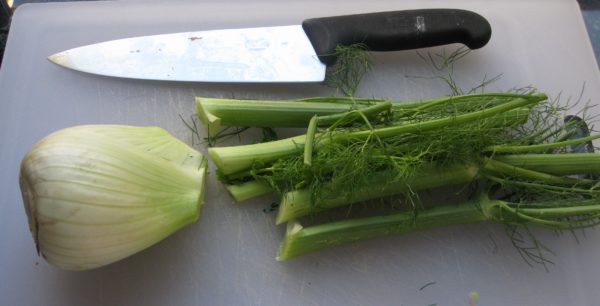
- Reserve the fennel fronds for garnishing.
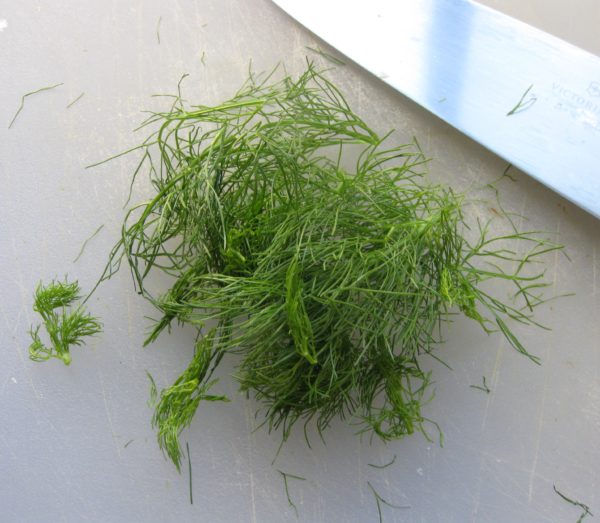
- Sauté the carrot, onion, fennel, and garlic in the olive oil in heavy-bottomed Dutch oven until the vegetables begin to soften, approximately 15 minutes.
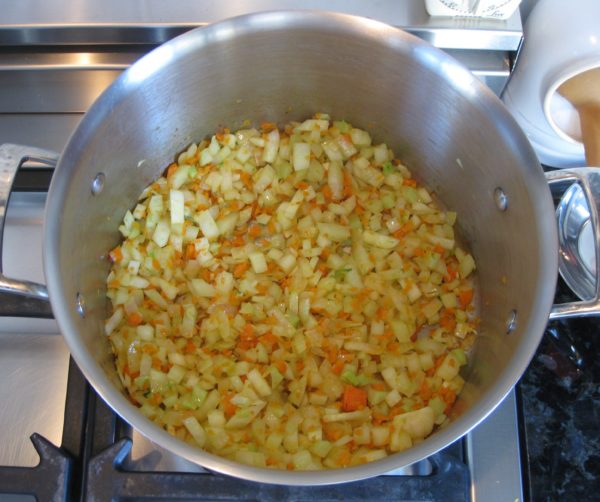
- Add the broth and bay leaf. Boil gently, partially covered, for 15 minutes.
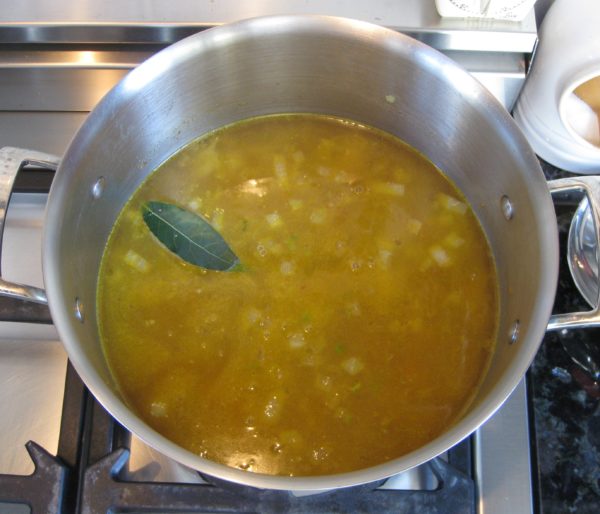
- Meanwhile, rinse and drain the lentils.
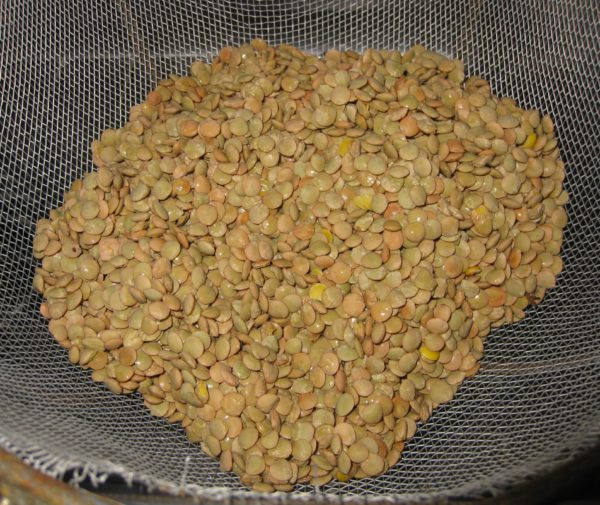
- Add the lentils to the broth. Bring the lentils to a gentle boil, partially covered, and cook approximately 30 minutes, adding salt and pepper after the first 15 minutes.
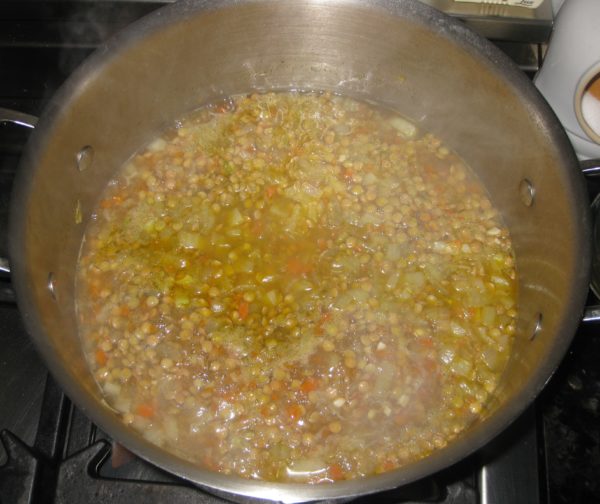
- If making the lentils in advance, remove them from the heat, cool to room temperature, and refrigerate.
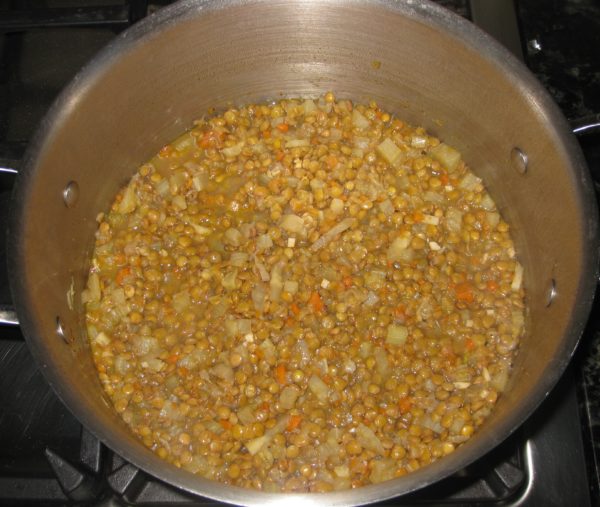
- When ready to serve, bring the lentils to a gentle boil with enough of the cotechino cooking liquid, or water, to loosen them but not make them soupy. Cook until tender but not mushy, approximately 10-15 minutes longer.
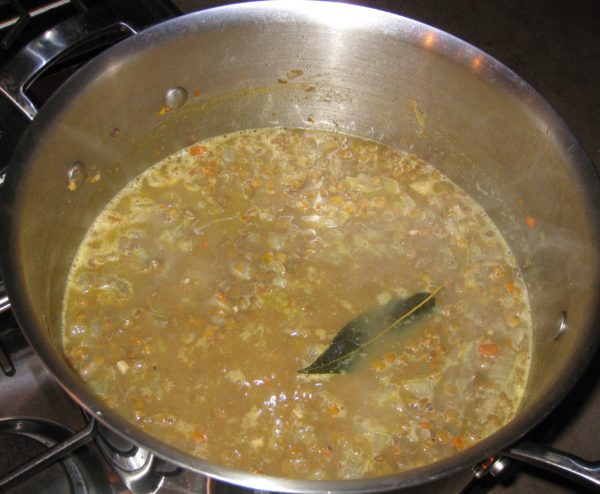
- Taste and adjust seasoning if necessary.
- Prick the sausages in several places using a pin. If the holes are large the casing may split during cooking.

- Put the cotechino in a large pot, cover with cold water, simmer, covered, approximately 2 ½ hours.

- Mince the fennel fronds while the cotechino cooks.
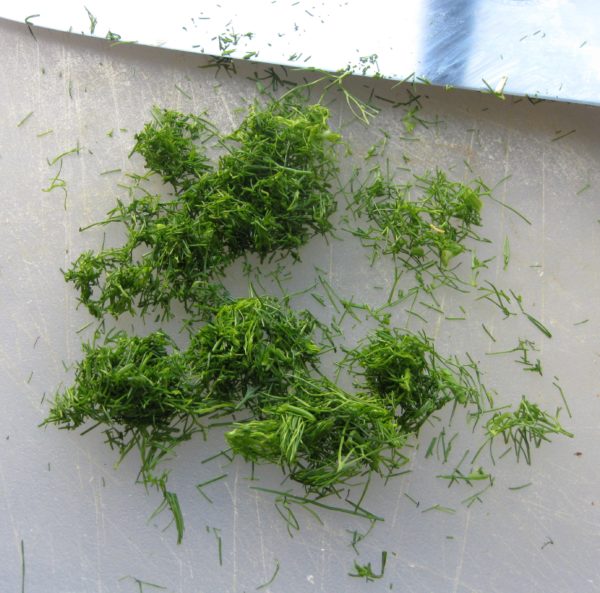
- The cotechino is best served piping hot as soon as is it removed from the cooking liquid.
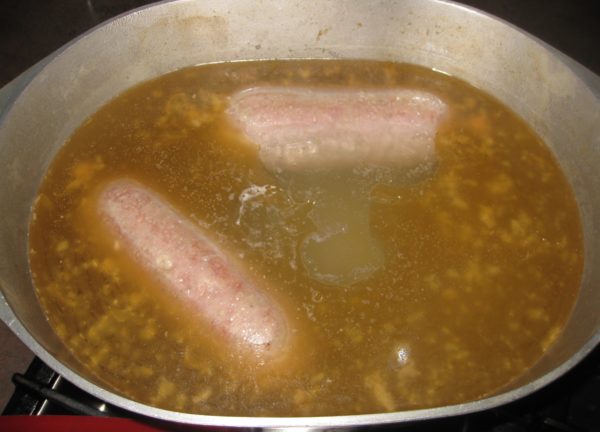
- Slice the cotechino.

- Plate several slices of cotechino on top of some of the lentils and garnish with minced fennel fronds, if desired.
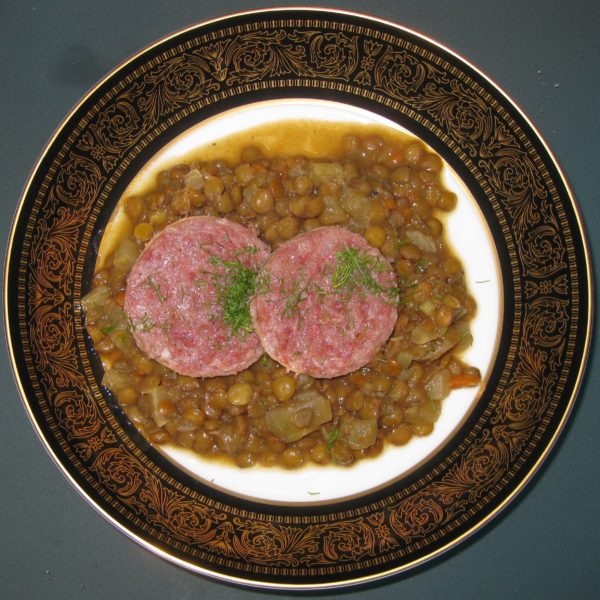
Copyright © 2019 by Villa Sentieri, LLC. All rights reserved.

